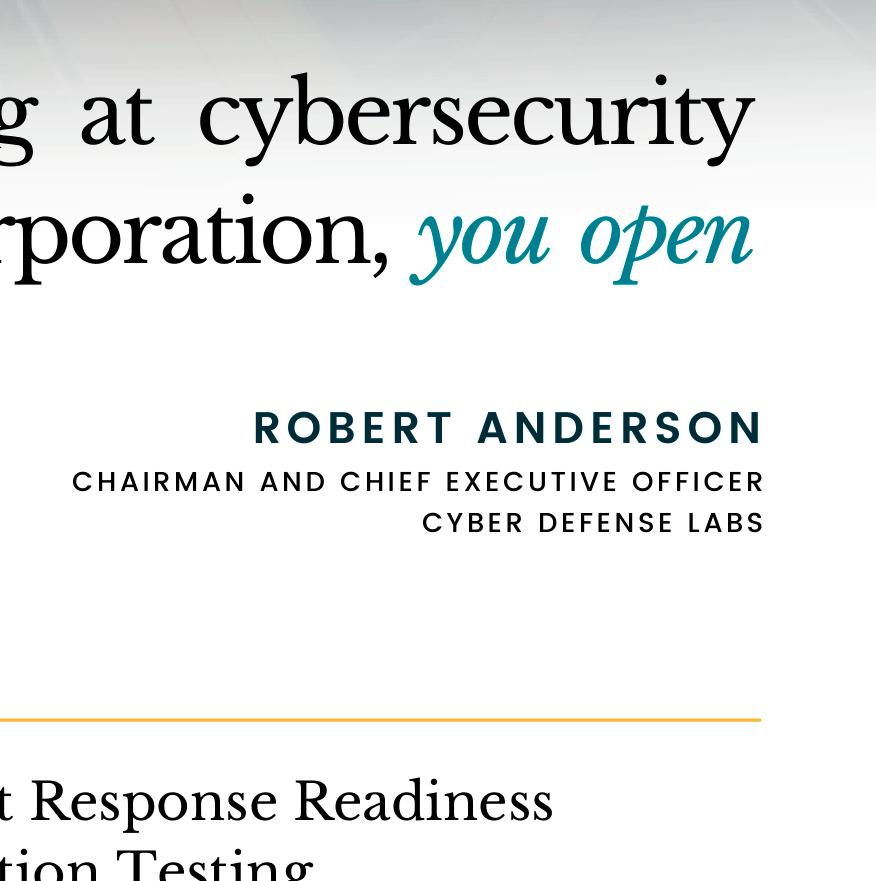






grow her company's portfolio brands,
and

lean into creativity and risk and build a culture that puts an emphasis on fun.






Texas wildcatters




Joe Foran of




































grow her company's portfolio brands,
and

lean into creativity and risk and build a culture that puts an emphasis on fun.






Texas wildcatters




Joe Foran of




























As you plan for the future, it is vital to establish impactful strategies to position your company for growth. Partnering with Whitley Penn’s energy advisors provides you with the unparalleled experience and insight needed to guide you towards achieving your organizational goals.

Start planning for success by scanning the QR code or visit whitleypenn.com.
















An elevated banking experience begins with seamless digital integration, allowing customers to bank anytime, anywhere, with banking products and services that provide user-friendly, seamless integration, empowering business owners to manage their businesses effortlessly.
We educate business owners to run better businesses, champion the free enterprise system, and uplift the economy for growth and success. Learn more at www.TexasSecurityBank.com.




We congratulate Joe Foran Chairman of the Board and CEO Matador Resources on being honored with the prestigious Legacy Award at D CEO’s The Energy Awards.
Joe’s journey as an oil and natural gas independent began in 1983 when he founded Foran Oil Company with $270,000 in contributed capital from 17 friends and family members. His exceptional leadership and vision since then have set new standards in the energy sector. We are proud to collaborate with such a distinguished leader and celebrate this signifi cant achievement.






At Comerica Bank, we proudly salute Mr. Joe Foran for his long and distinguished career in oil and gas. Mr. Foran is an industry stalwart, and his receipt of D Magazine’s 2024 Legacy Award is well deserved.
Mr. Foran and Matador have been a crown jewel of Comerica’s Energy Finance portfolio for over 40 years. His expertise, determination and loyalty truly stand out. We deeply value our strong relationship.
Thank you for raising expectations, within Comerica Bank and beyond.
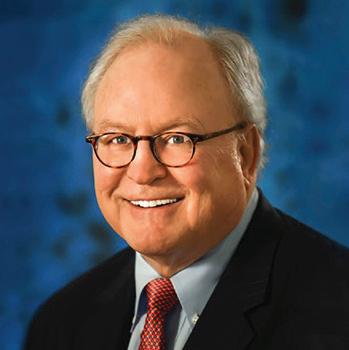
Chairman of the Board and Chief Executive Officer
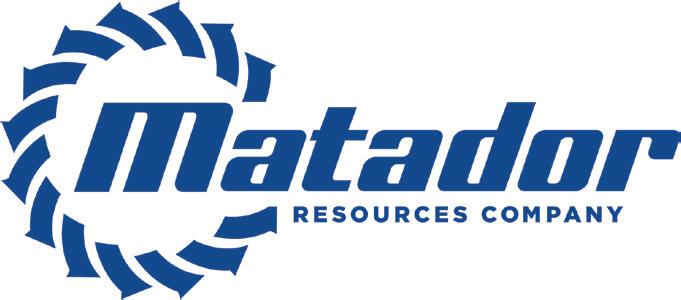













Joe Foran, Founder, Chairman, & CEO for the 2024 D CEO Legacy Award.















Cresta provides growth equity for sustainable and conventional energy infrastructure solutions for the industrial, logistics and agricultural sectors. With approximately $1.5 billion of assets under management, Cresta is led by a strong, operations-focused team with decades of experience in the energy and infrastructure industries.










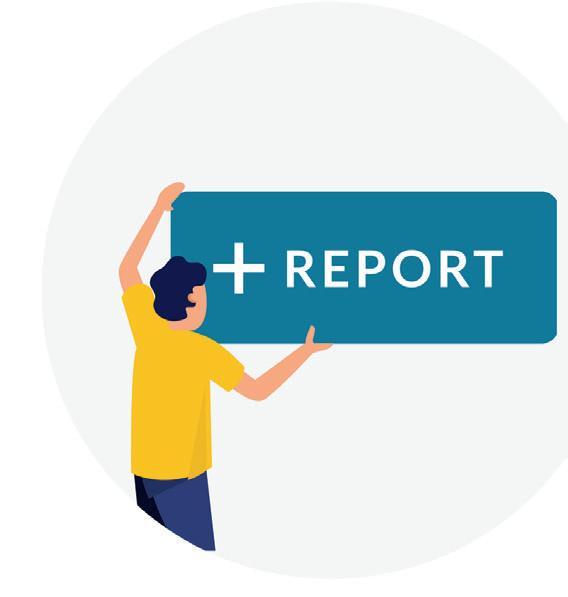

With the MyOncor app, you can report an outage, manage new service requests and get real-time updates from Oncor. REPORT AN OUTAGE MANAGE NEW SERVICE REQUESTS





Vistra congratulates Stacey Doré and Amy Simcox on their nominations for D CEO’s Energy Awards.
We are proud of them for their leadership, service, and contributions to the community and the Vistra family of companies.


STACEY DORÉ
CHIEF STRATEGY & SUSTAINABILITY OFFICER,
EXECUTIVE VICE PRESIDENT OF PUBLIC AFFAIRS
FINALIST: EXCELLENCE IN RENEWABLES & SUSTAINABILITY

AMY SIMCOX
SENIOR LEAD COUNSEL
FINALIST: RISING STAR IN ENERGY

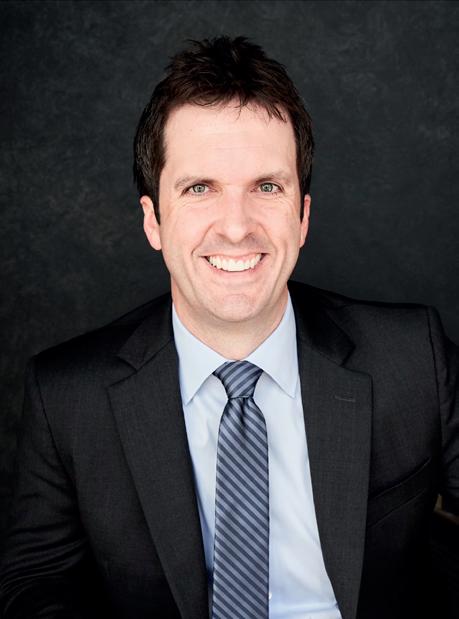








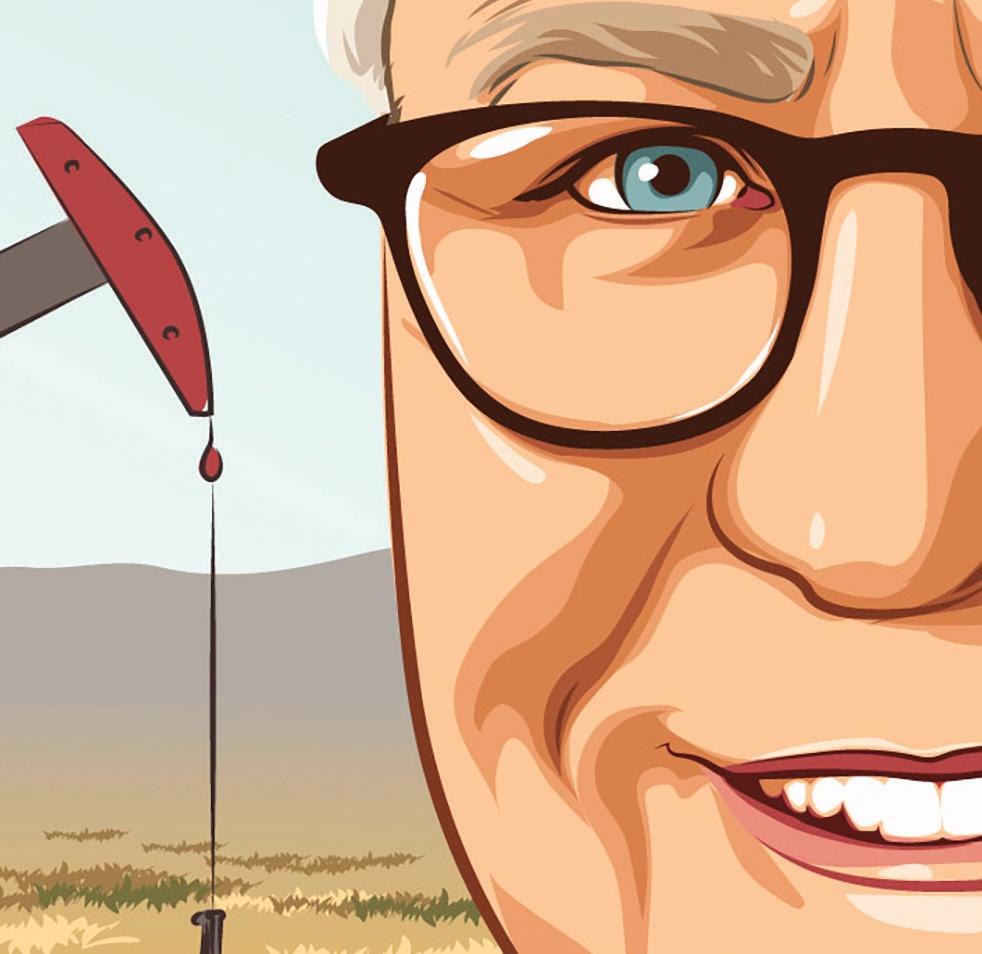











Joseph Wm. Foran has grown his Matador Resources from an initial market cap of $270,000 to approximately $8 billion.
in






Heineken and The Home



and gas in unimaginable ways.


After C-Suite posts at Depot, Stacey Tank takes the helm of Bespoke Beauty Brands, an influencer-driven cosmetics force. Today, Resources has a market cap of $8 billion.
Next-gen Texas wildcatters are overthrowing models, crossing lanes, and unlocking the mysteries of geology.





Joe Foran launched his first oil and gas company in the 1980s, fresh out of law school at SMU. Today, his Matador Taking the Bull story by






21 YOU NEED TO KNOW
Cary Grace, AMN Healthcare
24 MEET THE 500 Elaine Agather, JPMorgan Chase & Co.
24 LOCALLY SOURCED
Austin Patry and Sophia Karbowski, Realsy
26 ENTREPRENEURS
Allie Wardlaw and Bess Callarman, Allie + Bess
28 CONVERSATION WITH Wayne Moore, Crux Capital
30 INNOVATION
Dr. Ruben Amarasingham, Pieces Technologies
51 LEADING OFF
Jasmin Brand, Her Texas
52 ECONOMY
Foreign-born residents of North Texas are an integral part of the region’s business growth and prowess.



54 ON TOPIC
Dave Copps of Worlds, Lily Cabatu Weiss of the Dallas Arts District, and Adam Wright of Dallas Baptist University talk about the opportunities that lie ahead in their industries.
57 PURSUITS
Warren Tranquada, AT&T Performing Arts Center
58 FIRST RIDE

North Texas business leaders tell us about the first rides they owned.
60 RESERVATIONS FOR THREE
Area executives on the two local business leaders they’d most like to have dinner with—and why.
62 WELL TRAVELED: DUBAI
Skip Howard, Spacee
64 ROOTS
Prasad Reddy, Twisted X Global Brands
88 END MARK Pegasus: The Symbol of Dallas


































At Texas Mutual, we celebrate the dedicated professionals who power our communities and light the way to a brighter tomorrow. Congratulations on a job well done. As the state’s leading workers’ comp provider, we’re committed to ensuring this industry has access to safe, skilled, reliable workers now and in the future.
Texas Mutual is a proud sponsor of the 2024 D CEO Energy Awards.


that’s how digital realty chief executive andrew power describes what’s happening in his industry. AI has been a gamechanger in data center demand, the main force behind an insatiable thirst for energy. Jennifer Warren details the situation and how North Texas companies are grappling with the challenges—and stand to benefit—in her outlook piece beginning on page 40.
Warren is one of the nation’s top energy reporters and a thought leader who’s often asked to speak at industry events. She was among the fi rst to cover the shale revolution. Because she has a thorough understanding of the industry and access to its biggest players, her reports are incredibly insightful. Given her depth of knowledge, they also tend to be more dense than the personality profi les we typically publish in D CEO. For Warren’s latest deep-dive, we felt it was important to keep things at a high level of sophistication and give readers the value that only she can deliver. She spent months doing research and interviews before fitting the puzzle pieces together. “I was turning myself inside out, trying to thread it all together in a coherent way, with so much to capture,” she says.




Because it’s an international region with a strong base of oil and gas companies, North Texas is the ideal place for her to pursue her interests in energy and globalization, Warren says. Driven by intellectual curiosity, she operates in a left brain-right brain world. She is wildly creative but equally as passionate about unearthing data to confi rm (or disprove) her ideas.
When it comes to her work, Warren says she strives to advance the dialogue. “To me, what’s really important is being a straight-shooter, calling it like it is, and conveying what is true and what is real—but also what is possible,” she says. “In the end, if people see themselves in my stories, or they see something new or they learn, maybe get an idea that’s going to advance their work, that’s fantastic. I hope that happens. I hope I’m a catalyst, in some respects—a catalyst of opportunity.”


Christine Perez Editor
©
Are you overwhelmed by your Oil & Gas assets? Let PlainsCapital’s in-house Oil & Gas experts do the heavy lifting for you. Our comprehensive Oil & Gas management can help you simplify your investments and maximize your return. We operate with full transparency and with your best interests in mind.
• Full Accounting Services, including Joint Interest Bill Payment
• Lease and Surface Use Agreement Negotiations
• Veri cation of Division Orders
• Monitoring of Oil & Gas Market Conditions
• Advanced Proprietary Management Software for all your tax reporting needs and more

To learn more, contact:
Kathy Robertson RPL, CMM Manager, Oil & Gas Property Operations
817.255.4955
kathy.robertson@plainscapital.com
Or visit our website
Beth Good, Resource Royalty CEO, is unapologetically passionate about the Oil and Gas industry. Resource Royalty has continued to thrive under her leadership, maintaining their high level of success.
Her approach brings a fresh perspective that has benefitted Resource Royalty as well as Investors seeking to diversify into a portfolio comprised of Mineral Properties.




EDITORIAL
EDITOR Christine Perez
MANAGING EDITOR Ben Swanger
SENIOR EDITOR Will Maddox
ASSOCIATE EDITOR Audrey Henvey
ASSISTANT EDITOR Layten Praytor
CONTRIBUTING WRITERS Richard Alm, W. Michael Cox, Jennifer Warren
EDITORIAL INTERNS Gema Guevara, Victor Sanchez
ART
DESIGN DIRECTOR Hamilton Hedrick STAFF PHOTOGRAPHER Elizabeth Lavin
SALES MANAGER Rachel Gill
ADVERTISING DIRECTOR Rhett Taylor
SENIOR ACCOUNT EXECUTIVES Cami Burke, Haley Muse
MANAGING EDITOR OF SPECIAL SECTIONS Jennifer Sander Hayes
DIGITAL SALES COORDINATOR Olivia Booth
CLIENT OPERATIONS COORDINATOR Julianne Emeterio
MARKETING & EVENTS
MARKETING DIRECTOR Madeline Alford
MARKETING MANAGER Tori Carruth
ADVERTISING ART DIRECTOR Katie Garza
ASSOCIATE ADVERTISING ART DIRECTOR Andrea Chavez
EVENTS PRODUCER Kevin Morgan
EVENTS COORDINATOR Breanna Furrow
SPECIAL PROJECTS ASSISTANT Jordan Radasch
EVENTS INTERNS Randy Collins, Victoria Gonzalez, Kendyl Link
AUDIENCE DEVELOPMENT COORDINATOR Emma Barretto
EDITORIAL PROGRAMS MANAGER Sarah Masquelier Risi
SPECIAL PROGRAMS COORDINATOR Betty Burns
SENIOR GRAPHIC DESIGNER Anita Moti
RETAIL STRATEGY MANAGER Steve Crabb
MERCHANDISER David Truesdell
OPERATIONS ASSISTANT Macey Pieterse
DIGITAL
DIGITAL DIRECTOR Ricky Ferrer
DIGITAL OPERATIONS COORDINATOR Jade Garrett
SOCIAL MEDIA MANAGER Melissa Tallo
SOCIAL MEDIA INTERN Cloi Bryan
PRODUCTION
DIRECTOR Chris Mulder
PRODUCTION MANAGER Grace John
PHOTO RETOUCHER Jasmine Green
PRODUCTION INTERN Shelby Lansing
BUSINESS
CONTROLLER Sabrina LaTorre
SENIOR ACCOUNTANT Debbie Travis
SENIOR STAFF ACCOUNTANT Randall Rasor
ACCOUNTS RECEIVABLE COORDINATOR Jessica Hernandez
AP SPECIALIST Ron Dewey
EMPLOYEE ENGAGEMENT DIRECTOR Patricia Martin
IT TECHNICIAN Luan Aliji
OFFICE MANAGER Will Smith
ADMINISTRATIVE COORDINATOR Nikhael Virden
HOW TO REACH US
MAIL 750 N. Saint Paul St., Ste. 2100, Dallas, TX 75201
MAIN OFFICE 214-939-3636
WEBSITE www.dmagazine.com/dceo
The magazine assumes no responsibility for the return of unsolicited manuscripts.
LETTERS TO THE EDITOR feedback@dmagazine.com
CURRENT SUBSCRIPTION 800-732-9673 or subscriberservices@dmagazine.com
NEW SUBSCRIPTION www.dmagazine.com/requestdceo
ADVERTISING 214-939-3636 x 128
REPRINTS 214-939-3636
CUSTOM PUBLISHING 214-540-0113
SUBSCRIPTIONS
11
EDITOR-IN-CHIEF AND CEO Christine Allison
PRESIDENT Gillea Allison
CHIEF FINANCIAL OFFICER Thomas L. Earnshaw
FOUNDER Wick Allison
ROGGE DUNN, CEO, ROGGE DUNN GROUP
Create or Emphasize a Need
Creating or emphasizing your audience’s need is a powerful persuasion technique. When formulating an argument, consider the innate needs almost everyone has: the basic primal needs of food, shelter, safety, and protection of one’s family and the ego-driven desires to be loved, respected, and admired. Research the person you are trying to persuade. What makes them tick? What needs beyond their faith and family are important to them? Is it their company, career, politics, ethics, or charitable endeavors? What dominates their thinking and motivates them to action?
Fulfill the Need
You capitalize on people’s desire to obtain their needs by being the person who can fulfill those needs. You can enhance the effectiveness of this technique by emphasizing that the ability to fulfill that need is limited. It’s the theory of scarcity discussed in my June/July 2023 D CEO article. We all want what we don’t have. If time is running out, we especially want to act quickly, before it’s too late. Companies recognize the effectiveness of creating and fulfilling needs, which helps them sell products and services. When you have a headache, you need this brand of aspirin; when you are tired, this brand of coffee or energy drink picks you up; when you face the challenges of old age, you need Prevagen to help your memory. Think about it— hardly any products or services would be sold if the persuasive theme of the commercial is, “You’re doing just fine without this product, but you should buy it even though you don’t need it.”
If you need proof of the effectiveness of this concept, look no further than social media influencers.

Millions follow the fashion, advice, and/or emulate social influencers to meet their need to mimic the influencer’s world views or buy the products and services they endorse. Many people want to be like a successful, attractive, or famous person the public respects or adores. In addition to buying the endorsed products or services, they achieve that desire by ascribing to the political beliefs or lifestyle espoused by a celebrity, leader, or icon. That’s why the Kamala Harris campaign coveted Taylor Swift’s endorsement. The need to be like a successful celebrity has inspired many persuasive arguments and marketing campaigns. They range from simple phrases like, “Blondes have more fun,” to Dos Equis’ ad campaign about “The most interesting man in the world,” to “The Travis Scott” meal at McDonald’s. Who wouldn’t want to be the most interesting man (or person) in the world, especially if all you have to do is drink Dos Equis beer? Why spend time reading and attending cultural events if drinking a certain brand of beer makes you interesting and appealing?
The Takeaway: Identify your audience’s need and demonstrate how you or your company are the best avenue to fulfill that need, and your efforts to persuade will succeed.
ROGGE DUNN represents companies, executives, financial advisors, and entrepreneurs in business and employment matters.
500
Clients include the CEOs of American Airlines, Baker Hughes, Beck Group, Blucora, Crow Holdings, Dave & Busters, Gold’s Gym, FedEx, HKS, Texas Motor Speedway, Texas Capital Bancshares, and Texas Tech University, and sports figures like New York Mets manager Buck Showalter, NBA executive Donnie Nelson, and NBA Hall of Fame coach Larry Brown. Dunn’s corporate clients include Adecco, Beal Bank, Benihana, Cawley Partners, Match.com, Rent-A-Center, and Outback Steakhouse. In 2021, 2022, 2023 and 2024 Dunn was included in D CEO Magazine’s Dallas 500 list, which recognizes the most influential business leaders in North Texas. He has been named a Texas Super Lawyer every year that award has been given and recognized as a top 100 attorney in Texas by Texas Monthly (a Thomson Reuters service) and a D Magazine Best Hall of Fame Lawyer.











































Ccary grace grew up living in a planned community engineered to be equitable and diverse. Her mother worked as an operating room nurse, her father was a dentist, and her early career days were spent in finance and healthcare. Although she didn’t realize it at the time, all these experiences were building blocks for her current role leading Dallas-based AMN Healthcare.
When Grace was named CEO of the company in late 2022, the pandemic had drastically reshaped the industry. Healthcare staffing shortages created a vast need for temporary workers, and Covid surged nationwide, creating demand spikes in concentrated areas. Travel nursing grew 35 percent in 2020 compared to the previous year. Wages spiked 25 percent, with some travel nurses earning $5,000 to $10,000 per week at the pandemic’s height.
It was in this environment that AMN announced Grace as its new chief executive, succeeding Susan Salka, who had been in the role for 17 years and with the company for 32. Grace was ready for the challenge. She previously served as a divisional CEO at Aon, overseeing a $2 billion group that provided management and HR consulting to more than 10,000 clients. “We were doing a lot around the future of the workforce and human capital and how we help organizations build a high quality, sustainable workforce,” Grace says.
She knew the world of staffing and how to run a massive organization—AMN is on pace to
do about $3.3 billion in revenue in 2024—but AMN’s unique culture focused on healthcare, service, diversity, and equity presented an opportunity to call upon lessons from her upbringing.
Grace was raised in Columbia, Maryland, a community developed by shopping mall pioneer Jim Rouse. Subsidized housing, walkability, and a religious center—where all faiths enter through the same doors and head into respective worship areas—were part of Grace’s formative years. “When you grow up there, you don’t know anything is different,” she says. “I didn’t know I didn’t grow up in a normal place.” It prepared her to lead an organization that embraces diversity and has a long-running medical and infrastructure service project in Guatemala.
Grace also grew up gaining an understanding of and empathy for healthcare professionals. Her first job was in her father’s dental clinic. A veteran of the United States Navy, he would go on to get a PhD in psychology. “The most formative boss I had was my dad,” Grace says. “He taught me a lot about service to the community and about humanity in business.”
As the healthcare staffing industry evolves, shortages and challenges brought forth by the pandemic are still circulating. AMN’s various businesses (see sidebar) are focused on leveraging technology and finding innovative ways to build a workforce and provide quality care. For example, AMN is using AI to predict shift needs 60 days in advance, and its research division provides labor market analytics so providers can make informed decisions about their staffing needs.
The company has come a long way since it was founded as American Mobile Nurses in 1985. AMN has around 3,500 employees supporting more than 10,000 clients annually and more than two million since its founding. This past August, it launched a mental health teletherapy platform for students.
“We’re focused on how we support our clients and be their partner in the mission of care,” Grace says, “[how we] help them find more innovative, sustainable, high-quality, and affordable ways to be able to build their workforce.”
AMN Healthcare has expanded into more than its medical staffing foundation.
EXECUTIVE SEARCH
AMN sources executive and leadership talent, from academic and company executives to interim and physician leaders.
ANALYTICS
AMN’s white papers and research deliver healthcare trend information on which specialties generate the most revenue, where shortages are most significant, and how providers shape career paths.
LANGUAGE SERVICES
Twenty percent of hospital patients do not speak English as their primary language. AMN gives providers access to medically qualified interpreters in 200 languages.
STAFFING APP
About 250,000 clinicians use AMN’s app, AMN Passport, which helps physicians, nurses, and other healthcare professionals find jobs, manage assignments, access resources, and connect with colleagues.

Jackson












following a banking career that took her to London, San Francisco, and New York, Elaine Agather moved to Dallas in 1984, climbing a career ladder that would eventually lead her to become chairman and CEO of JPMorgan Chase & Co.’s Dallas region. Agather says her company’s most significant success this past year was JPMorgan Chase’s acquisition of First Republic, the third and largest U.S. lender to fail in 2023. “That deal helped stabilize and strengthen the U.S. fi nancial system in a time of uncertainty,” she says. “About 7,600 of our employees worked on the integration and have done a fabulous job. The integration of this large bank has been truly seamless for clients and bankers at First Republic. Our people respectfully managed this transition, knowing circumstances were particularly tough for our new colleagues, whom we welcomed with open arms.”
EDUCATION:
The University of Texas at Austin (MBA), The University of Oklahoma (BA)
LESSON LEARNED:
“If you’re smart, you’re constantly learning new lessons every day. We all have di erent hard skills and soft skills. Using both strengths hand in hand will help expand your job opportunities. Flex the other side of yourself, and don’t let people put you in a box.”
DESTINATIONS OF CHOICE: “Montana, Aspen, Napa, West Texas, and Paris, France—really, anywhere my family is.”
PRIZED POSSESSION:
“My reserved seating—an eight-seat box in my name that I will hand down in my will—at the Fort Worth Stock Show and Rodeo.”
KEY STRATEGIES:
“Authentic and consistent leaders build trust. Leaders must also connect with employees and clearly communicate the team’s mission. Additionally, gratefulness and a sense of humor are two traits that set a strong leader apart. Funny people make the day go by faster.”
CHILDHOOD MEMORY:
“I loved riding around in my father’s pickup truck.”
FUTURE FORECAST:
“One of our industry’s biggest opportunities is in our backyard: the massive growth we continue to see across North Texas. We’re basing more bankers in Plano and other suburban cities to keep pace with growth in DFW. The growth we are experiencing and forecasting in DFW is visible with Chase
branches expanding where the growth is and new banks coming in to serve new residents moving into our state.”
INTERVIEW FAIL:
“Two years ago, I was interviewing a young job candidate, and the first question they asked was, ‘Do I have to come in every day?’ It was a short interview.”
USING AI:
“We began using AI more than a decade ago and now have more than 2,000 ML and AI experts working for our bank. We have outstanding talent using technology to help prevent fraud, improve our risk controls, and handle other important functions like marketing. The important thing is that we maintain a very high ethical standard and are very transparent in how AI helps us make decisions.”
MY LEGACY:
“I want to be remembered as someone who was authentic, tireless, had a sense of humor, and a passion for the business. Every legacy depends on preparing a new generation to carry the work forward. Teaching and encouraging our teams— from the newest associate to the most senior banker—is as important as anything I do.”
CRAVINGS CURED
Sold online in packs of 10, Realsy flavors inlude peanut butter cacao, peanut butter, and almond butter.


A TikTok trend led the young entrepreneur to meld his culinary and health interests into a snack company called Realsy.
seven years ago, austin patry was studying entrepreneurship at TCU while running an on-campus smoothie and açaí bowl food truck, Rollin’ n Bowlin’, with fellow student Sophia Karbowski. The pandemic forced the business partners to switch gears and sell frozen smoothies, and in 2023, the concept was acquired by Shake Smart. By this time, Patry began exploring packaged goods opportunities after observing on TikTok that consumers were gravitating toward healthier snack choices. Karbowski once again partnered with him to launch Realsy, a farm-to-shelf snacks company using ingredients sourced from Mexico. “In college, I didn’t think my full-time job would be owning a company that sells dates filled with nut butters,” says Patry. “The feedback we get and the sales behind it are positive without us doing a lot of promotion.” The Dallas company is on track to do roughly $1.4 million in sales this year, with a big jump to $8 million forecasted for 2025. —Layten Praytor





















story by CHRISTINE PEREZ
speech therapist bess callarman and occupational therapist allie wardlaw met in 2010 while working side by side at a Dallas nursing home. They never dreamed that their friendship would evolve into a story of entrepreneurship. Over time, the two young mothers realized they shared a love for colorful bracelets and came across a bead called vulcanite. They decided to try their hand at bracelet making and spent $50 each on the beads. Proud of their creations, they launched an Allie+Bess Instagram account and posted photos of their work. Soon, they became inundated with custom order requests.
“We asked each other, ‘Is this a business?’” Callarman recalls. “We didn’t know what we were doing, but we decided to give it a try. The next day was Allie’s birthday. We thought that was good luck and launched the next day—August 29, 2019.”

The women initially planned to go the wholesale route. They got a break in February 2020 when they were asked to do a pop-up at Stanley Korshak. But the next month, the pandemic hit, and everything changed. Not willing to give up on their fledgling enterprise, Callarman and Wardlaw switched gears and went direct to consumer. “We got scrappy,” Wardlaw says. “We had a website up and running within a week.”
Five years since launching, Allie+Bess is on track to generate between $3.5 million and $4 million in sales for 2024. And what began as a single bracelet has grown to about 1,000 different pieces, including earrings, necklaces, rings, and more. Callarman and Wardlaw continue to oversee all design. The jewelry is made by local refugee artisans who have been with them from the early days, as well as manufactured overseas.
With more than 90,000 followers on Instagram, social media is the primary driver for sales. Live online launches of new products—including items in Allie+Bess’ “gameday” line, which tap into school spirit by using popular university colors—have been a big hit. Collaborations with influencers like Katie Kime and country music duo Maddie & Tae have performed well, too. “Instagram is our bread and butter, but we’re also getting back into wholesale,” Callarman says. “We see a huge growth opportunity there.”
The partners say they never created a business plan; they just aligned around passion, a vision, and the strong work ethic they witnessed in one another while working together at the nursing home. “A lot of people hear our story and think our success just happened,” Callarman says. “It was a lot of hard work. We just hustled—and we weren’t going to fail.”





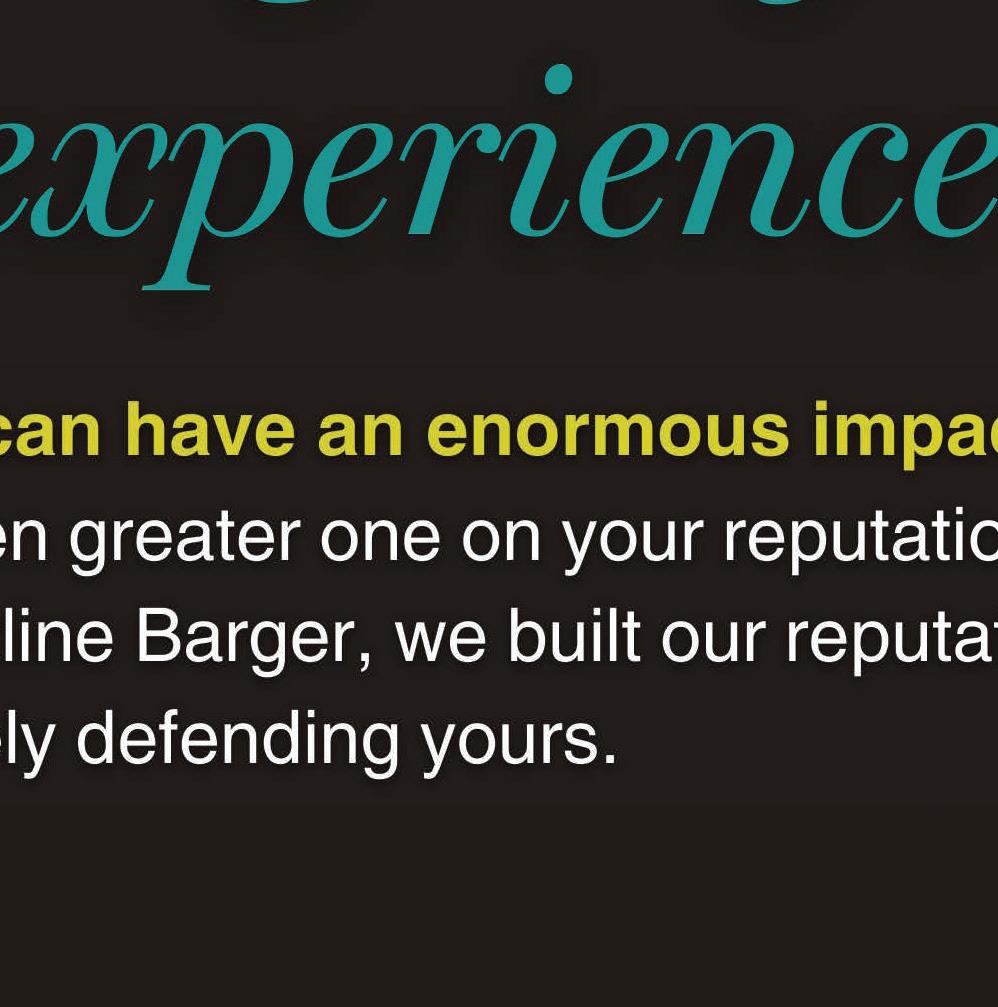





The local hedge fund vet’s emerging private equity firm fueled the growth of Buff City Soap and is behind HTeaO’s rapid ascension.
for 13 years, wayne moore held leadership positions at various hedge funds. Most recently, he served as co-founder and partner at Lunia Capital, which invested in business services and IT companies. But one morning in 2018, Moore had an epiphany. “I woke up and realized I just didn’t want to do it anymore,” he says. “The last thing I wanted was to not be excited about where I was putting capital.” So, Moore took a year off to explore emerging markets.
“That search led me to the lower and lower-middle markets because of a generational transfer of wealth happening with baby boomers,” he says. “Over the next 30 years, we’re going to see trillions of dollars of assets change hands.”
Moore launched Crux Capital in 2019 in Dallas, using his own cash, to begin investing in consumer service companies with an annual EBITDA between $1 million and $15 million. “These businesses are dominantly owned by one person or one family, and the reason they sell is typically age-related,” he says. “Only about a third of the time does a company that fits these criteria transfer to the next generation, so most of these companies never had a real institutional partner.”
Moore pours investment dollars into companies based in North Texas—or those no more than a three-hour flight away from DFW. “Dallas is the best place to launch a private investment firm in the world,” he says.
His biggest hit thus far has been Buff City Soap, a plant-based soap franchise, into which Crux,
and its LPs, initially deployed $10 million in December of 2019. The company promptly relocated its headquarters from Memphis to Dallas, and Buff City Soap scaled from about 20 units to more than 260 today. Over that growth track, Crux deployed hundreds of millions of dollars into the enterprise. It has since sold a significant portion of its ownership stake to General Atlantic.
Other portfolio brands include HTeaO, a drive-thru tea concept with a goal to triple in size by 2026 to 300 locations. Crux also counts Superscapes, one of the largest commercial landscape companies in DFW, and Woody’s Brands, a multiunit operator of bar-restaurant concepts across Texas and Louisiana, as investments.
Earlier this year, to increase his firm’s food and beverage play, Moore launched restaurant holding company Uncommon Brands to invest in QSR and fast-casual F&B concepts that have three to 20 units. “We came across brands that were interesting but lacked real management, infrastructure, and depth,” Moore says. “Although we were interested, it was just too heavy of a lift for private equity to get involved. So, we saw an opportunity to launch a holding company.”
So far, Uncommon, led by former NFL fullback and tight end Garrett Mills, has deployed just north of $20 million; over the next several years, it expects to invest $100 million. The holding company’s first purchase came in the form of Fuego Tortilla Grill, a fast-casual Tex-Mex restaurant with four locations in Texas. The goal is to grow it to 25 locations over the next five years.
Crux, which has nine employees, has so far raised capital on a deal-by-deal basis, but soon, Moore aims to initiate an institutional raise. “That’s our natural evolution,” he says. “We could probably be a $200 million, or greater, fund in the next year or two. Until then, we will continue to raise capital on a deal-by-deal basis. As far as our portfolio, I could see us growing to 15 or 20 companies.”














discharging patients, transitioning them between providers, and providing daily progress notes are some of the most crucial and time-consuming tasks a physician faces. Dallas-based Pieces Technologies was created to bring efficiency to the process by leveraging artificial intelligence. Its platform is now in place at hospitals across the country, where AI generates notes for doctors to review.
story by WILL MADDOX
In the last year, Pieces has gone from completing one million patient summaries to four million in 96 different clinical specializations and securing partnerships with Parkland Health, Children’s Health, and Texas’ top-ranked hospital, Houston Methodist.
The company began by using AI to turn terabytes of information into 150-word synopses of patient histories, updated every two minutes as it receives more data. The summaries can be used in physician notes or handoffs in what Pieces CEO Dr. Ruben Amarasingham, an internal medicine physician, calls a “Here’s the deal” statement.
The platform has since been expanded to include discharge summaries, which are updated daily, and provide information the next physician will need for follow-up care after the patient leaves the hospital. Pieces’ ability to write daily progress notes is another time-saving feature essential to documentation for billing purposes.
More recently, Pieces has launched stealth pilot programs with multiple local and national health systems and has quadrupled its sales pipeline, Amarasingham says. The company also is looking to move into the outpatient space. Other innovations are on the way.

Pieces in Your Pocket is a mobile version of the tech. Physicians can speak on their phones, and the program transcribes the info and adds it to health records. “The goal is to allow them to get off their screens and go back to the traditional practice of medicine, where they [spend more time with] the patient,” he says.
In September, Pieces completed a $25 million growth round with significant participation from Children’s Health. The company also recently landed a $2 million National Institutes of Health grant to be a patient-facing version of the technology. It hasn’t all been smooth sailing. Earlier this year, the Texas Attorney General looked into Pieces’ AI accuracy reporting, and the two entered an agreement to have a third party evaluate the technology.
TIME SAVER
Dr. Ruben Amarasingham founded Pieces Technology to help physicians focus on patient care.
“The idea is to be more than clinical and assist the patient in navigating their cancer care,” Amarasignham says, “building on the strength of the work we’ve done.”

The Center for Business Impact at Communities Foundation of Texas empowers your company to make a lasting difference
Since 2017, Communities Foundation of Texas (CFT) has worked with companies of all sizes to grow their impact in North Texas. The Center for Business Impact (formerly CFT for Business) is a one-stop shop for businesses looking to make the greatest positive impact on our region.
Services include:
• Charitable fund management, philanthropic advising, and grantmaking
• Corporate giving campaigns
• Employee volunteer and networking opportunities
• Philanthropic board training, internship facilitation, and more
Reach out to our team if we can provide a complimentary consultation to share how our expertise in corporate social responsibility; diversity, equity, and inclusion initiatives; and environmental, social, and governance programs can help drive your employee and community engagement.

Northern Ireland is the only place in the world with seamless tariff-free market access to both Great Britain (GB) and the European Union (EU).
If you locate your business here, it means you can ship seamlessly to GB and EU markets –without tariffs, customs documentation or declarations.
Or if you source goods from Northern Ireland, our unique market access and regulatory alignment with the EU make the buying process easy.
You’ll also access a thriving region with world-class products, services and a proven track-record across a range of sectors including Manufacturing, Engineering and Tech.
That’s why 100 countries already buy from us and over 1,500 international companies are located here.
Could your business be next to benefit ?
Find out more at investni.com/international
The global green economy is expanding at a breakneck pace, as rapidly developing technology takes hold. A recent report by the London Stock Exchange puts the industry’s total revenue for 2023 at approximately $5 trillion, with a market capitalization of more than $7 trillion, with the strongest green revenue growth tied to the Auto, Industrial goods & services, and Construction & Material sectors.
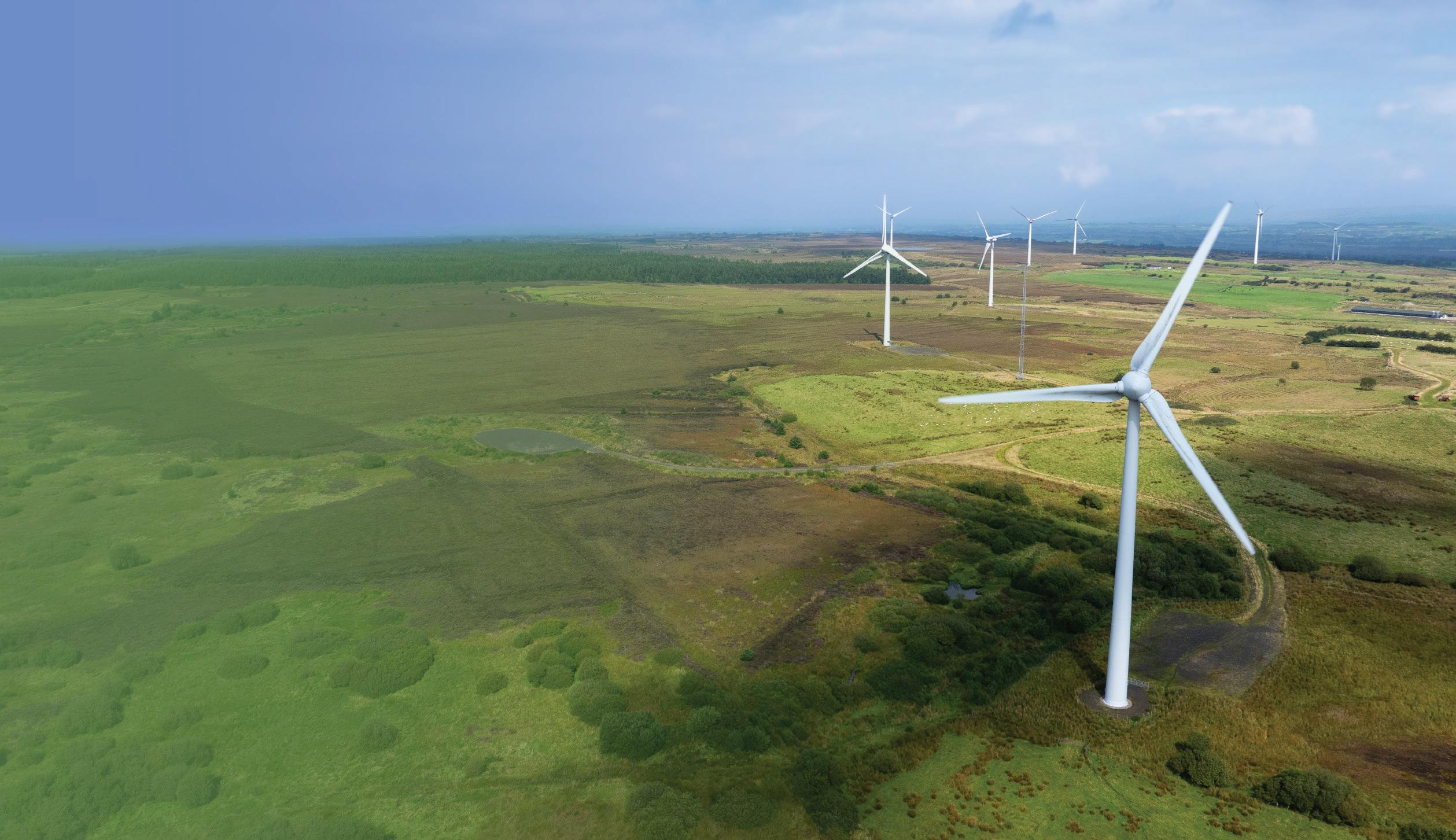
The report states in no uncertain terms that, “the green economy represents a generational investment opportunity.”
As the US market continues to outperform the rest of the world, governments around the globe are enacting trade restrictions across many of these industries as part of increasing onshoring efforts. The European Union appears likely to enact a 38 percent tariff increase in the coming months on EVs made in China, which accounted for nearly 20 percent of battery-powered EVs sold in the EU last year. At the same time, the bloc is attempting to shift its clean energy reliance away from China, which is currently responsible for more than 80 percent of the world's solar manufacturing capacity.
The immediate and growing need for established infrastructure and resources around Engineering, Manufacturing and reliable supply chains is far outpacing development in the European and UK markets.
This combination of industry growth and geopolitical factors is creating a unique opportunity for American
companies looking to expand their presence in major overseas markets. The European market is home to 500 million consumers and is the world’s third-largest economy behind China and the US. The UK market encompasses 67 million people as the world’s sixthlargest economy by GDP, and is largely dominated by the services sector with a high level of consumption.
Parked at the intersection of these markets, Northern Ireland has spent years investing to build out infrastructure and upskill its workforce across its flourishing Manufacturing, Engineering and Technology sectors to meet the demands of the green economy, bolstered in part by substantial, ongoing government investment stretching back for more than a decade, as the UK began to realize its huge economic potential.
Home to world-class suppliers with global exporting experience, Northern Ireland’s local supply chains are already mobilized and serving key green economy development including lowcarbon heating, renewables, green mobility, and green fuels. An estimated
60 percent of Northern Ireland’s manufacturing companies are selling into the green economy and generating nearly $2 billion in turnover and $300 million in exports.
Northern Ireland has seen an increasing influx in recent years of American companies in high-tech sectors looking to establish or expand their presence in the EU and UK markets. US-owned companies have accounted for nearly 40 percent of FDI projects in Northern Ireland since 2020, and now make up close to 20 percent of the 1,200 international businesses currently operating in the region. The European economy consists of 99 percent small-to-medium-sized businesses, presenting a significant opportunity for market penetration. As such, that surge of American presence–from startups to publicly traded corporations–is expected to continue on its current trajectory.
Author Bio: Danielle Glassner, FDI Business Development Director, West Coast at Invest Northern Ireland.
story by AUDREY HENVEY

After C-Suite posts at Heineken and The Home Depot, Stacey Tank takes the helm of Bespoke Beauty Brands, an influencer-driven cosmetics and lifestyle force.

BOUT A YEAR AGO, STACEY TANK GAVE herself a homework assignment: Watch 30 minutes of TikTok content each day. The former C-Suiter at brand-name corporates was up to speed on Facebook and Instagram, but if she was going to run a burgeoning beauty and wellness company, she needed to understand her young customers’ platform of choice. After a couple of months of study, the 43-year-old Bespoke Beauty Brands CEO pushed herself a step further; it was time to hit record.
Becoming a TikTok content creator has resulted in a library of videos—with viewership peaking at nearly 500,000—in which Tank advises watchers on what shoes are the best to wear in the airport, how to apply lip gloss using the “twodot method,” and behind-the-scenes content from New York Fashion Week. She also shares career tips and business strategies, everything from the art of influencing key stakeholders to embarrassing stories from the corporate world.
Tank launched her career at General Electric. In her decade with the $68 billion conglomerate, she traveled the world and gained experience across key operations, working in groups ranging from marketing and communications to finance and audit. Next, she joined Heineken USA, where, as the only woman chief corporate relations officer at a major U.S. beer brand, she streamlined the company’s PR strategy and increased its overall media impressions by 278 percent within one year.
Next, she became the chief commercial officer and president of The Home Depot Foundation, followed by a role as CEO of the multibillion-dollar Home Depot Installation Services and Home Depot Measurement Services, where she oversaw the closure of four unprofitable business lines and led those that were left to double-digit growth. In June 2020, Tank boomeranged to Heineken to become its chief transformation officer—and just the second woman in the company’s history to be on the executive committee.
Tank is “one of those people who can do it all,” says Maggie Timoney, CEO of Heineken USA. “In order to operate at the level that she does, you must be able to handle a lot, process quickly, move on, compartmentalize, focus, and deliver. And the pace of change, as we know, in the world and society is only accelerating. It’s not decelerating. So, the ability to do what she does is really a core skill.”
Throughout her career, Tank’s corporate adventures have taken her to Myanmar, Sierra Leone, Brazil, and the U.K., but with two sons—one of whom was keen on returning to America—she began to look in the States for her next opportunity.
Around the same time, she sent a birthday card to NYX Cosmetics Founder Toni Ko—the two women are Henry Crown Fellows through the Aspen Insti-

tute. Ko heard that Tank was returning to the U.S. and asked her where she planned to work. By that point, in early 2023, Tank was weighing offers and asked Ko for advice. “We traded a dozen emails that night,” Tank says. “She wrote back saying, ‘Those are all really boring. You shouldn’t do any of them. You should come be the CEO of my company.’”
Toni Ko grew up with an inside look at the beauty industry, working at her family’s perfume and cosmetics store after school. At 26 years old, she formed her first company, NYX Cosmetics. Fifteen years later, after hitting $93 million in annual revenue, she sold it to L’Oreal. Ko had more to pursue, but due to a non-compete agreement, she had to wait five years before launching another beauty enterprise.
Liberated in 2019, Ko founded Bespoke Beauty Brands. Having worked with artist, drag queen, and entrepreneur Kim Chi throughout the years, Ko scored Chi’s KimChiChic Beauty as the first
The cosmetics brand is gearing up to launch on Amazon and iHerb for customers in the U.S.
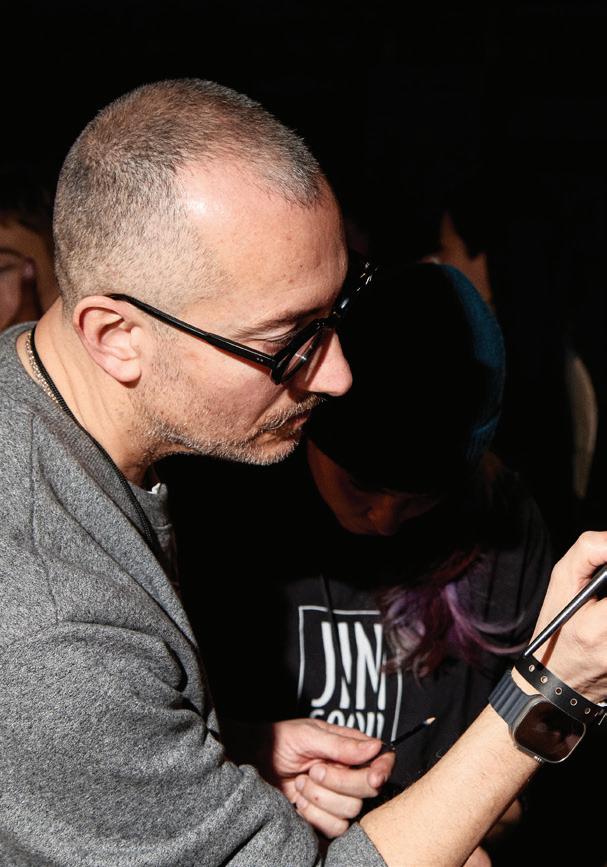
brand under Ko’s new portfolio company. Bespoke runs all the operations tasks—sales, marketing, social media, design, product development, accounting, operations, e-commerce, supply chain, and customer care—for the brands under its umbrella.
Ko says the goal for Bespoke was to go into business with influencers, celebrities, and fashion designers and help them fuel their beauty startups. For a second portfolio brand, she teamed up with award-winning New York-based fashion designer Jason Wu, whom she met through mutual friends, and floated the idea of launching a beauty brand and pitching it to Target. They saw that upscale department and beauty stores like Sephora and Neiman Marcus had designer beauty brands, but mass category businesses did not. “So, we went to Minnesota and went to Target,” Ko says. “We presented the idea, and they loved it. And that was the beginning of the inception of Jason Wu Beauty.”
Both Bespoke brands have seen surges in shelf space at CVS, JCPenney, Shoppers Drug Mart, Kroger, and London Drugs, as well as a deeper presence on Amazon, Flip, TikTok Shop, and more.
As Ko sent emails across nine time zones to Tank in 2023, it was clear that a friendship had the chance to expand into a collaboration. For Ko, the decision to bring Tank on board was simple. “Stacey is a people person,” she says. “She loves being with her team. She touches on every issue and every subject with high energy and intelligence. But it’s not just that. It’s her compassion, her ethics, and the love in her heart that inspires me the most.”
Tank flew to Ko’s home in Los Angeles for a

weekend. There, Ko outlined the story of her business and her vision for marrying artists’ creativity with her passion for beauty and entrepreneurship. “I knew that Toni was obsessed with product and product quality, and she’s clever,” Tank says. “She’s very in the zeitgeist. She’s really good with trends.”
The weekend debrief included a primer on product flow, from R&D and design to a consumer’s shopping cart. Then, Ko provided Tank with her company’s fi nancial data. “I had a preconceived notion around startups,” Tank recalls, “You always hear, ‘They’re on year 15, and they still haven’t become profitable.’ And I thought, ‘This sounds hard to grow into something that eventually becomes profitable.’”
Tank, a former auditor, sat in bed that night and pulled the data into spreadsheets. “I made pivot tables, ran analytics, and made charts, and I got confused—the P&L was beautiful,” she says.
By the following day, Tank had heard and seen enough. “Beauty is an unbelievable category,” she says. “I didn’t know that this was a category where you could start a brand and in three years make it profitable—let alone on a trajectory for incredible profitability and fi nancial health. What an incredible combination. That’s where I started to [see] the pieces coming together.”
The fi nal puzzle piece was looking through the products in Ko’s garage. SKU by SKU, Tank got a taste for the fun of working in the beauty industry. “I’ve worked in nuclear power, I’ve worked in banks, I’ve worked in beer, I’ve worked in all these interesting categories,” Tank says. “I worked in healthcare









Building on his reputation as a couture designer, Jason Wu’s beauty brand blends high fashion with accessible luxury. The concept is that beauty should be e ortless, chic, and echo, Wu says, the “empeccably refined femininity” that’s the hallmark of his fashion. New Jason Wu beauty products are launched each month, building on awardwinning o erings such as the Good Night Mr. Wu lip mask and the Wu Brow 24/7 laminate. The brand uses clean ingredients, says Bespoke Beauty CEO Tank. “It’s skin-loving,” she says, “meaning we have things like hyaluronic acid and jojoba and vitamin E, and it’s going to make your skin barrier healthier because you’re using it.”















For artist, performer, and entrepreneur Kim Chi, landing a finalist spot in Season 8 of RuPaul’s Drag Race was just the beginning.


KimChiChic Beauty launched in 2019 as a Bespoke Beauty Brand. It features bright colors and cheeky product names like “Almost Catfished” and “Rice Rice Baby” to combine a playful tone with a mission of releasing a ordable beauty products. Last year, the brand was the beauty launch partner for TikTok live shopping and TikTok Shop. By the summer of 2023, the brand was viral. KimChiChic Beauty landed in the top 2 percent of all TikTok Shop sales in the U.S.
equipment. You can get excited about MRI machines because we sell them to save people’s lives. But there was something about these [beauty] products where you couldn’t wipe the smile o my face.”
When she found herself dreaming about how to grow the portfolio’s brands, Tank knew it was time to make a move. “I was waking up in the morning with a hundred ideas about how we could reach new consumers and delight consumers, and how we could make this company growth-oriented and fun while growing the brands into $100 million companies and then into brands that can be billion-dollar operations,” she says. “And that’s when I told Toni, ‘Let’s dance. Let’s do this.’”
Tank o cially became CEO of Bespoke Beauty Brands in September 2023. The company’s HQ is within an industrial building in Irving, where the walls of the front o ce are painted a funky pink and feature a sprinkled donuts theme. Behind that, a wall signed by Kim Chi is adorned with lighted shelves and a symphony of beauty products. The shelving units reflect displays found at








CVS, Target, and London Drugs and are used to experiment with how new product displays look.
In the back of the building, warehouse space is crammed with rows and rows of boxes full of products. The space comprises 55,000 square feet of pick, pack, and ship space for e-commerce, direct-to-consumer, and wholesale retail delivery.
The headquarters belongs to Bespoke, which moved to North Texas a couple of years after launching in Los Angeles. The relocation was motivated by several key factors, including the fact that the region has a thriving beauty business base. “Irving became a darling on the list by being very well located close to Dallas, close to where the talent is, and an easier commute,” Tank says. The new facility allows everything to be done under one roof. “Dallas—and Texas in general—is open for business,” says Tank. “We’ve felt welcomed here. And in addition to that, Dallas is very well located in the United States. So we have one distribution hub, and that’s here.”
It allows the company to distribute to brickand-mortar storefronts—grocery chains, CVS, JCPenney, London Drugs, and Canada-based Shoppers Drug Mart, to name a few—and serve social e-commerce customers. Last year, TikTok invited KimChiChic Beauty to be the beauty launch partner for its live shopping and TikTok Shop platforms. (See sidebar.) The KimChiChic brand grew by 170 percent last year.
When Tank joined Home Depot more than 10 years ago, the big question on the minds of retailers was the explosive growth of e-commerce and how online sales could coexist with—or challenge—brick-andmortar retail. In the last year, she says, a third leg of the stool has emerged and is here to stay—social selling. “I heard a lot of people talk about the ‘creator’ and the ‘influencer’—that’s been around for a while,” Tank says. “But the ability for people to shop with one click turns individuals into retailers.”
The social selling avenue allows consumers to
hear directly from other users about what products work best for their lives. Tank believes the three different sales platforms all work together rather than compete. “I don’t think they’re at odds,” Tank says. She uses the example of Opal Powder, a new Jason Wu product that debuted in August. “They may see a friend or an influencer swatch it, put the highlighter on, and think, ‘That’s interesting, but maybe I don’t know if I could wear something with that much glow.’ But then they’re getting their groceries, and they’re in Kroger, and they walk by it and they’re influenced to get it.”
KimChiChic’s TikTok has more than 420,000 followers and 7 million likes. Post views climb as high as 3.7 million—one video showcases an article on popstar Chappell Roan using the product.
“These channels work together in different ways,” Tank says. “When KimChi went viral on TikTok last year, all the channels did better.”
The state of play has morphed since Bespoke Beauty Brands’ founding. The company has no plans to add to its portfolio—for now. “We used to identify ourselves as an incubator,” Ko says, “but we are very happy with the two brands that we currently have, and we decided just to nurture these two brands to a huge success.”
After a massive year last year, KimChiChic is staring down ongoing double-digit growth. “It’s a very special brand, like lightning in a bottle,” Tank says. “And then Jason is a younger brand, so it’s continuing on its growth trajectory, just a little bit on a delayed cycle behind its big sister, KimChi.”
Tank is still a student of TikTok. “I have to live at the end of my comfort zone if I’m going to help this young company swim in this new space where no one knows the exact playbook,” she says. “And we just have to come with a ‘Yes, let’s try it’ energy.”
It’s an attitude that landed the company partnerships with Sephora and YouTube Shorts—the platform’s short-form feature. “They welcomed us, I think, because we’re fast,” Tank says. “And we have to leverage that to continue to grow.”
The CEO has embraced the speed and more
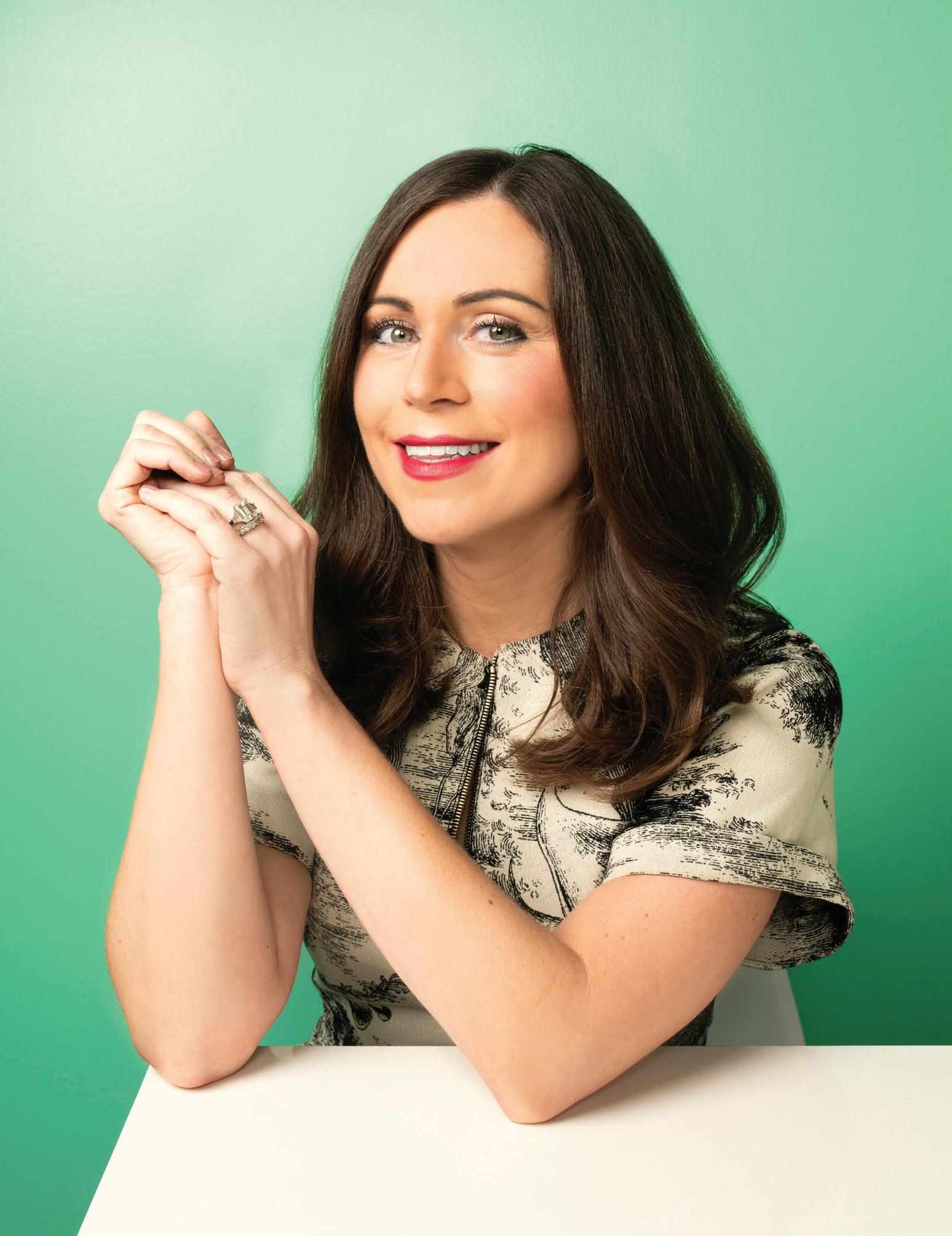
daring vibe that comes with leading a high-growth enterprise versus some of the larger companies on her resume. “One of the biggest differences to me, coming from a company with 500,000 people, is that although you’re trying to win every day, you’re really playing to lose less—or playing not to lose,” Tank says.
But Bespoke Beauty Brands is playing to win, Ko and Tank say, and it has the luxury of leveraging its early-stage status as a strength. With that comes the ability to lean into creativity and risk. It’s a mindset that trickles down into the company culture, Tank says. “‘We try to keep it light. We try to keep it fun,” she says. “This category is fun. If we’re not having fun with lipstick and highlighter, we’re doing it wrong.”































unlocking the mysteries of geology.
Disruption is happening in oil and gas in unimaginable ways. Next-gen Texas wildcatters are overthrowing models, crossing lanes, and unlocking the mysteries of geology.
story by

JENNIFER WARREN

future. Dallas’ Pioneer Natural Resources was the bellwether independent shale producer, an epic oil success story, and now a subsidiary of super-major ExxonMobil, which acquired it for $63 billion. In the first quarter of this year alone, energy M&A deals were valued at $73 billion, with global major Chevron packing up and moving to Texas from California. For the most part, cash and size are king. But global market competition, disruptive technology, and entrepreneurial vision play a role, too. Demand for oil and gas is not abating, despite a decarbonization drive. Fourth-generation oilman and Heyco Energy CEO George Yates, with his hindsight, notes “hydrocarbons are still a growth business.”






—astute, seasoned or young—are leaning into a cresting wave of opportunity in energy. Their visions include the hunt for good rock with the right gamma-ray signature, hyperscale computational power and a Starlink connection, and everything in between. The prize could be big on two fronts: emerging world hydrocarbon demand and tech’s endless thirst for power. Things have gone from what essentially has been flat-lined electricity growth in the U.S. to the potential of 100 “peak-capacity” gigawatts (GW) being added by 2030, Goldman Sachs reports. Last year, peak demand was 740 GW, with Texas accounting for more than 10 percent.


“Texas is a big piece of our portfolio, and the shining star is Dallas.”
ANDREW POWER CEO, Digital Realty
Playing into the perfect storm, large U.S. regional grid operators report a mismatch between decommissioning power generation and a lack of new generation coming online between now and the end of the decade. These reliability reports were like siren calls, says Danny Rice, chief executive of NET Power, which transforms natural gas into clean energy through an oxy-combustion process. “We don’t have time,” he says of the widening gap between supply and demand. “It’s easier to add new load growth, especially from AI and data centers, than it is to add new generation capacity from, say, nuclear. That leaves natural gas to meet the demand.”
Seemingly strange bedfellows are jockeying to procure energy. In this new era, firms can’t do it alone. They’re merging, consolidating, fortifying, and developing new partnerships across the hydrocarbon, electron, and even cryptocurrency aisles. Add to that, “We’re in a technological arms race,” notes Andrew Power, CEO of Digital Realty, a publicly traded data center pioneer. Energy underlies its success. The runway for oil and gas looks long.
Last year, energy M&A deals topped $234 billion as oil and gas companies fortify and retool for the
Peak global projections range from 106 million barrels per day (mbd) through 2029, according to the International Energy Agency, and 116 in 2045 by OPEC. But it could go higher yet by transforming globally abundant gas into liquids. With U.S. oil production hovering around 13 mbd, we could see 14, but 15 or 16 is a stretch, according to Yates, given the depletable nature of oil.
Consolidations have occurred as long as the industry has existed. This time around, Yates says, “I think it’s di erent in degrees, though not completely. Consolidations are typically the product of the majors or large companies using one of their big strategic advantages, which is capital.”
Independents are also selling, due to aging leadership, retirements, and legacy planning. Noncore acreage sold by the large consolidators will be picked up by the independents. Across decades to the 2010s, the independents acquired and aggregated acreage left behind by the majors in the run-up to the shale revolution. The rebuilding of inventory may be di erent this time around.
Another wave of opportunity is international, notes Yates. Alongside his U.K. and Spanish subsidiaries, the energy CEO is eyeing massive new fields where large, unfettered blocks of land will yield “the prize”—shale’s promise of greater resource recoveries. And, Yates notes, we don’t yet know what future technology will impact demand tomorrow’s opportunity. “I’ve seen M&A cycle through with an important e ect on the structure of the industry,” he says. A new day may be dawning.
In a 2009 D CEO interview, Pioneer Natural Resources leader Scott Sheffield prophesied that it would be a global gas world for the next 40 to 50 years. By 2022, the advent of global gas was diffused, and two years later, U.S. liquified natural gas is awash on more shores, owing significantly to Russia’s invasion of Ukraine. Energy security is a driver. The U.S. is the largest global producer of natural gas, with North Texas players once again setting the table.
As the world continues to reset post-pandemic, countries are recognizing the need to utilize their indigenous resources. The growth of global gas is thought to be an Asia-leaning chapter for the next decades. Maybe. “For the last 100 years, societies across the world have focused on two things: reliability and affordability,” says Rice. “Over the last decade, a focus on a third criterion has emerged— cleaner and decarbonized energy.”
A Dallas resident, Rice decided to launch an oil and gas firm—with little experience—in Appalachia’s early days of shale gas around 2007. He and his two brothers, representing finance, geology, and petroleum engineering, cobbled together 100 acres here and 200 there, went public with Rice Energy in 2014, and then merged into EQT in 2017. The brothers, including now-chief executive of EQT Toby Rice, became owners of the largest natural gas-producing firm sitting atop one of the largest natural gas fields in the world, the Marcellus. (Trevor-Rees Jones of Dallas’ Chief Oil was also important in the Marcellus Shale’s breakout story.)
NET Power is a unique shift from being an Appalachian wildcat-producer to the downstream application of power generation. Danny Rice is applying IP that will decarbonize natural gas power generation. A 50-megawatt demonstration project in La Porte, Texas, and a Permian utility-scale project, alongside Occidental Petroleum for carbon sequestration or enhanced oil recovery, are just the beginning.
Many believe decarbonization is moving away from fossil fuels to get clean power, Rice surmises. According to his calculations, it is cheaper
Technology is driving a fierce demand for data center space—and the energy that powers them.
Global power usage is expected to grow on a 25 to 33 percent CAGR between 2023 and 2028.
to start with the lowest-cost energy feedstock on offer in the United States—natural gas—and capture and remove the CO2. “We have a better solution than the path you’re heading down with renewables and batteries,” he says.
Discussing greenhouse gases at a neighborhood coffee shop, Rice relays the science: “There’s too much dilute CO2 escaping into the atmosphere, mostly from power generation and from other industrial sources,” he says. “Ultimately, we solve this by essentially replacing those carbon-emitting power plants.”
As for methane, where attention is also directed, Rice notes: “We know firsthand just because we run the largest natural gas producer in North America where our methane emissions are—they are like a rounding error.”
The Inflation Reduction Act of 2022 incentivizes this evolving natural gas ecosystem. NET Power’s novel IP moat locks down a standardized power plant design that is unseen in the thermal power industry. Rice counts a potential of 900 power plants in the U.S. and globally. His gas plant has a carbon intensity profile the same as wind and solar, with a price tag 30 to 50 percent lower. Netpower’s first utility-scale plant, operational in late 2027, will be “expensive, but the cost curve will decline, and then we really start to distance ourselves,” Rice says. He figures his plant outcompetes even small-scale nuclear on a generation basis. “It is quite profound,” he says.
‘AI IS JUST GETTING STARTED’
To help quench its insatiable thirst, Big Tech must ally with oil and gas even as enterprises seek greener sources from renewables and denser forms of energy like nuclear. Beyond data centers, power is needed for semiconductor ecosystems and next-gen reshoring; bitcoin, crypto and decentralized platforms (Web3); and the demands of mega-computing power.
Digital Realty CEO Power knows firsthand about energy demand with the AI frenzy that began in earnest in the spring of 2023. It reached a crescendo after AI infrastructure darling Nvidia resorted to its 10-1 stock split of the $1,200 stock
in June, from a 709 percent run-up since early 2023. “At an investor day in 2017, our CTO was seeing AI coming next, and we need to get ready to push our infrastructure,” Power says. “Think about cooling and power densities.”
Digital Realty had record bookings in the first half of 2024, particularly large-capacity blocks driven by AI. The company serves 5,000 customers around the world in 50-plus metropolitan areas and six continents.
Power’s career began in Digital Realty’s early days in downtown Dallas two decades ago. “Our biggest customers are the hyperscale cloud computing companies, headquartered in the Pacific Northwest down to Silicon Valley,” he explains. Think Amazon, Meta, Google, and Nvidia. The data center phenomenon emerged alongside these firms involved in digital transformation, then cloud computing, and now generative AI. “Cloud computing is not nearly done, and AI is just getting started,” Power says.
Interestingly, Digital Realty has been quantifying its capacity in energy terms—kilowatts, megawatts, and gigawatts. This captures the energy use from substation to the data center. With its 2.5 GW data center portfolio and another 3 gigawatts of future runway of growth, the company is ready with land secured and access to power.
“Texas is a big piece of our portfolio, and the shining star is Dallas,” Power says. The Texas portfolio is 100 percent green. From the CEO’s perspective, it’s not just a Texas energy system challenge but more national. “With a power demand profile that was flatlining,” he says, “today, we’re shocking it and saying, ‘Now run a marathon at a sprinting pace.’
“If you want something scaled up and contiguous, fast, you go [to the U.S.] before Europe and other parts of the world,” Power says. About the rush, he cautions restraint given the heavy investment requirements—of substations, power production, transmission, data centers—to avoid booms and busts. He notes a “reshaping of the global data center landscape, with AI driving the incremental wave of demand.” The public cloud services market is projected to grow by more than 20 percent in 2024, reaching $675 billion and 22 percent in 2025, according to Gartner’s industry data.
Power says it’s hard to forecast demand far in advance. “I can tell you it feels very real, the activity and the flurry of these customers; it feels early,” he says. As proof, Digital Realty had a record $252 million in new leases for the fi rst quarter, added to a backlog of $541 million. Power casts about for his sense of it. “It feels like it’s going to be big,” he says. “I can’t tell you how big or how it’s going to play out.”
There is a call on the midstream sector, the middlemen to the restructuring, and innovating producers, owing to the demand for more feedstock, derivative products, and electrons—everywhere. In the U.S., it’s a complex logistics play mastered over decades by Dallas’ Energy Transfer.
The company is no stranger to M&A activity sweeping through the oil patch either. It has grown significantly through acquisitions, including large deals like Southern Union for $8 billion and Suno-
co for $5.3 billion, which reshaped Energy Transfer’s natural gas-weighted portfolio. “It’s just been a big part of the DNA of Energy Transfer,” says Tom Long, a co-CEO at the company. “Even these acquisitions that are over $7 billion—you call them bolt-ons.”
Energy Transfer’s executive team continues to build on the vision of Founder and Chairman Kelcy Warren. It has manifested into a full spectrum of hydrocarbon streams connecting virtually every U.S. basin to demand centers whether cities, ports, or nations.
Long spent his early career developing largescale petrochemical facilities on Texas’ Gulf Coast and in Saudi Arabia. Although midstream is core, Energy Transfer is now moving into downstream spaces, as well. It’s the wellhead-to-water strategy that its massive scale allows for. Long is deeply familiar with Energy Transfer assets. In 1989, he was part of the largest natural gas pipeline merger in history, the $3.2 billion Texas Eastern and Panhandle Corp. tie-up, of which its valuable Trunkline LNG assets are a part.





“My role is to make sure we are all operating under the same vision.”
LAUREN YATES COO, Heyco Energy
“Looking
Nineteen gigawatts of load are expected to ramp up in Texas over the next two-and-a-half years.
Texas understands the need to reliably power its mega-sized growth economy. The state’s legislature incentivized natural gas-fired power in 2023 with $5 billion in low-interest loans, since upped to $10 billion. The program was originally
oversubscribed eight times to take the grid from 85 to 150 gigawatts (GW) by 2030. In looking at future power generation “load growth” in Texas, ERCOT estimates approximately 150 GWs to 2030, compared to a peak load
of 86 GW in 2023. Of this, the electrification of the Permian Basin is 24 gigawatts and other large loads of 41 GW, for hydrogen and related manufacturing, bitcoin mining, and data centers. Don’t forget reshoring semiconductor plants, as well as advanced manufacturing and their supply chains. Victor Sauers, chief executive of TKO Energy, is most concerned about the 19 GWs of load expected to ramp up in Texas over the next two-anda-half years, driven by real construction and projects “looking for a
wire.” That’s equivalent to adding one California.
A constraint for renewables development is the interconnection queue lengths. Sauers notes that Texas’ backlog is about one to two years, and at the federal level, with the Federal Energy Regulatory Commission, it’s 10 to 12 years. Adding transmission lines presents a longer wait time. More than 150 GW of solar is in the ERCOT queue and 105 GW of energy storage. The best wind sites are exhausted, and solar projects are hunting for ground and wires, Sauers says.
Renewables may be on-grid faster as gas turbines have a waitlist of over three years, a supply chain problem. Meanwhile, industrial users are making deals behind the meter, buying their own power facilities in solar, wind, nuclear, and gasfired power generation. Energy Transfer is being approached by data centers, plus building eight 10 megawatt (MW) gas plants for its own use. Amazon announced a 200 MW project at a nuclear plant it bought.
“The load is just so big in Texas and in renewables,” Sauers says.



“I didn’t expect AI to make on-grid mining less viable so quickly.”
CHRISTOPHER ALFANO CEO, 360 Mining
After 45 years, Long knows where all the bones are buried and the pipes are laid.
Crude oil became a significant part of Energy Transfer’s portfolio following the acquisition of Sunoco. Massive volumes are transported through its Dakota Access pipeline—500,000 to 600,000 barrels per day—heading for the Gulf Coast. “The company has invested heavily in export terminals to handle natural gas liquids (NGL) streams, particularly at the Nederland terminal, which exports about 20 percent of the entire U.S. NGL streams through multiple docks. Long calls it “Flexport,” a distinctive capacity wherein eight to nine docks process over one million barrels per day of NGL, chilling and loading them in a type of synchronicity. “That increases your export capacity on a continuous basis even more,” Long explains.
Alongside exports, Energy Transfer’s global expansion continues, with o ces in Beijing, Panama, and now Singapore for crude oil trade. India and the Middle East are in consideration. With a weather eye on Latin America, it was approached about building out pipelines in Argentina to increase its oil production possibly five-fold. The company’s transported oil volumes grew by 44 percent during the first quarter of 2024 to 6.1 million barrels per day, owing to acquisitions.
With regulatory constraints for new interstate pipelines, the value of existing assets has increased, Long says, crediting an optimization team that folds in new assets. Moving volumes of natural gas e ciently “from the largest supply areas to the heaviest demand centers,” such as from the Marcellus and Utica to Gulf LNG facilities, is a priority, Long adds.
Recently highlighted was 233 billion cubit feet (bcf) of gas storage along all its systems and upward of 9 bcf of power plant and data center deals. Come what may, Energy Transfer is ready.
‘WELCOME
An emerging generation is cutting new trails in oil and gas, with a greater good kind of vibe. Bitcoin miners are developing tech solutions in unchartered territories in blockchain and energy. However, competition from the hyperscalers—flush,
power-hungry firms—may overthrow even the new models of bitcoin miners. “Three years ago, everything [in mining] was based on production and hash rate,” says Christopher Alfano, CEO of 360 Mining. “Now, the value lies in interconnection and power contracts. In my opinion, bitcoin miners will be displaced by better-capitalized entities that can pay more [for energy].”
360 Mining, with its original pilot facility outside of Fort Worth, has morphed into an oilfield service provider. A 30-year-old graduate of SMU, Alfano says, “We’re an oil and gas company using bitcoin mining to achieve better gas prices and lower emissions. Originally, in 2021, we were a bitcoin miner using gas for cheap power.” In early 2023, after re-fracking wells and realizing the potential, Alfano says, “the market found us —needing solutions for stranded gas and tighter emissions controls.”
Alfano expects other miners to move further up the supply chain, co-locating at power plants and further upstream to natural gas wellheads. He observes, “I didn’t expect AI to make on-grid mining less viable so quickly, but bitcoin mining gravitates toward the lowest cost of power.” He points to publicly traded miner Hub8’s move upstream by purchasing a natural gas plant in Canada.
The bitcoin mining industry receives its fair share of criticism, whether it’s noise, competing with traditional energy users, or its net value to society. “We’re right at home with the oil and gas industry,” Alfano says. “They look at us like, ‘Welcome to the party. Now you know how it feels to be beaten down.’”
Across five mining sites, 360 Mining’s power usage is about 10 to 20 megawatts in total. In the U.S., miners’ use of power gen is estimated to fall between 0.6 and 2.3 percent of total U.S. electricity consumption. Data centers currently use roughly 4 percent and are forecast to use 8 or 9 percent by 2030, note analysts at McKinsey.
Miners are catalyzing innovation in grid optimization called “demand response.” They can shut down operations to free up a stressed grid in a nanosecond. Nuclear power plants are showing interest, too. Immersion cooling has become the rage for miners and data center operators trying
to cool hot servers and save on energy costs. “We focus on solving the natural gas problem,” Alfano says.
Other parts of the world with stranded gas assets are attracting miners as well, in Africa, the Middle East, and Kazakhstan. “This technology can also unshackle more barrels of oil,” Alfano says. And then, once customers get their just deserts, a reward in this case, they have bitcoin. After going down the bitcoin learning curve “rabbit hole,” some often choose to hold bitcoin rather than convert it.
About bitcoin’s allure, Alfano enthusiastically relays, “Anyone with an internet connection, anywhere in the world, can transmit value without any counterparty interfering with your transaction and taking huge fees.” His Starlink internet connection—the satellite-based constellation owned by Elon Musk’s SpaceX—optimizes operations in the dual-purpose gas and mining field.
Emerging industry leaders are hyper-aware of the confluence of energy provision, technology sharing, and prosperity. Vice Chair and Chief Operations Officer Lauren Yates, a fifth-generation executive at Heyco, says, “From the parent company perspective, my role is to make sure we’re all operating under the same vision and strategy.” The company’s European technical team retreated to field operations in New Mexico, their “Matador University,” to witness shale technology firsthand.
Yates notes that the economic multiplier of Heyco’s operations in Spain and the U.K. mean potentially hundreds of thousands of jobs ahead. In Spain, 1,100 first-time royalty checks were received in the mail from legislation her father initiated and pushed. The potential savings on carbon and methane from local gas production in Spain to replace NGL from the U.S. and pipeline gas from Algeria is significant, too. “We’re bending the curve,” CEO George Yates says.
At an inflection point, North Texas firms are innovating in the field, rethinking technologies and advancing economies. That’s impact. Oil and gas and electrons are being disrupted equally. Nothing seems off the table. A center of gravity circling energy is being shifted once again.
LEGACY AWARD
Joe Foran, Matador Resources
UPSTREAM EXECUTIVE OF THE YEAR
Albert Huddleston, Aethon Energy
Andrew Inglis, Kosmos Energy
Jordan Jayson, U.S. Energy Development Corp.
MIDSTREAM EXECUTIVE OF THE YEAR
Jeff Ballard, Sentinel Midstream
Tom Long, Energy Transfer
ENERGY FINANCE
LEADER OF THE YEAR
Vikram Agrawal, American Resilience Partners
Atanas Atanasov, HF Sinclair
Roland Burns, Comstock Resources
Gabe Garcia, Texas Capital
Lindsay Sherrer, TenOaks Energy Advisors
RISING STAR IN ENERGY
Chris Alfano, 360 Mining
Cass Powell, Ricochet Fuel Distributors
Amy Simcox, Vistra Corp.
Jacqui Spicer, Oncor
Lauren Yates, HEYCO Energy Group
EXCELLENCE IN ENERGY SERVICES
City Electric Supply, Thomas Hartland-Mackie
Ecobat, Thomas Slabe
Ricochet Fuel Distributors, Kelly Roberts
EXCELLENCE IN RENEWABLES AND SUSTAINABILITY
Dallas/Fort Worth International
Airport, Sean Donohue
ELM MicroGrid, Aron Bowman Good Faith Energy, Mohammed Abdalla Leeward Renewable Energy, Jason Allen Nexus Renewable Power, Sargon Daniel Vistra Corp., Stacey Doré
Gage Zero, Zeina El-Azzi Harnyss, Kirby Smith SAFFiRE Renewables, Tom Nealon Valor, Joseph DeWoody
DEAL OF THE YEAR
NGP raises $700 million for clean energy fund (Chris Carter, NGP), Silver Hill Energy closes fourth fund with $1.13 billion (Kyle Miller, Silver Hill Energy Partners), Texas Capital closes $1.2 billion term loan financing with HighPeak Energy (Daniel Hoverman, Texas Capital)
M&A DEAL OF THE YEAR Energy Transfer Acquires WTG Midstream; ExxonMobil Acquires Pioneer Natural Resources; Sunoco Acquires NuStar Energy
PRIVATE EQUITY FIRM OF THE YEAR
Cresta Fund Management, Chris Rozzell
Pearl Energy Investments, Billy Quinn Tailwater Capital, Edward Herring
Winners
story by JENNIFER WARREN
LEGACY AWARD WINNER
by AARON SACCO
JOE FORAN launched his first oil and gas company in the 1980s, fresh out of law school at SMU. Today, his Matador Resources has a market cap of $8 billion.
JOSEPH WM. FORAN IS quintessentially Texan. The founder, CEO, and chairman of Matador Resources was raised in the Panhandle, owns a ranch, and has built an exceptionally impressive career in oil and gas. He was born at Camp Wolters, an Army post in Mineral Wells, while his father served in the Korean War. Growing up in Amarillo, he worked in the oil fields in high school. “The big field was the Panhandle, which was still being drilled at the time,” he notes.
The Panhandle is considered one of Texas’ greatest petroleum reserves, save the Permian.
Foran attended law school in Dallas at SMU on a merit-based Sumners Foundation scholarship—one of five scholars who received a full ride. But he came to the realization that the practice of law was not for him. In a career soul-searching exercise, he wrote down the names of the people he admired most on a piece of paper. They were all connected to oil and gas.
So, he mustered up his Texas gumption and made a bold decision to form an energy company, convincing 17 friends and neighbors to contribute $15,000 each to fund it. Five years later, in 1988, he reorganized Foran Oil Co. as Matador Petroleum, rolling partnerships he had established together in the manner of T. Boone Pickens’ Mesa Petroleum.
Foran attributes his early success to key directors, including oil and gas luminaries Marlan Downey from ARCO and Shell and Jack Sleeper from Pickens’ enterprise. They gave him credibility in the mid-1980s, when oil plummeted from $35 a barrel to $10. “[Boone and I] worked well together and became friends,” Foran says. “Both of us were from Amarillo with paper routes being in common, too. He gave me valuable insights and advice and was more often right than wrong,” he adds, with his typical dry, multi-layered wit.
On Sept. 10, 2001, the day before the terrorist attacks, Foran received approval to take Matador Petroleum public. He chartered a plane to fly to New York. But the chaos following 9/11 put everything in disarray. And Foran, who had been following a conventional acquire-and-exploit strategy, shifted to take Matador down the industry’s new path. The company became part of the big shift to horizontal drilling and hydraulic fracturing—that is, the shale revolution.
Horizontal drilling began in the Delaware Basin in New Mexico around 2003, Foran notes. “In Texas, it was all about big ranches where series of wells couldn’t be drilled by the majors,” he says. “In New Mexico, you could aggregate smaller groups of acreage. You’d get a section and be happy with it, right? You could get things done, and it seemed to fit us as we grew along.”
In June 2003, Foran sold Matador Petroleum

to Tom Brown Inc. for $388 million in an all-cash deal. The following Monday, he founded Matador Resources. Just shy of a decade later, on April 15, 2013, Foran and his team rang the bell at the NYSE, a little more than a year after the company began publicly trading.
These days, Foran is leaning more into “exploration and knowledge of geology.” He prioritizes recruiting, attracting talented students from 15 schools, including Colorado School of Mines, The University of Texas, Texas A&M, and Oklahoma State.
He points to stats of other publicly traded companies to highlight the efficiency of the oil and gas industry, comparing, for example, Matador’s 400 employees and an $8 billion market cap to Harley-Davidson’s 6,400 employees and $5 billion cap.
Surrounded by the waves of industry consolidation, Foran reveals an open-minded attitude built by years of experience. “I never say, ‘I’ll never do
that,’ right?” Meanwhile, Matador is expanding its Delaware Basin footprint, making its biggest buy ever—Ameredev. The $1.9 billion purchase price stands in contrast to the company’s more classic “brick-by-brick” efforts of deals past.
Matador had record production and a record number of operated wells in the second quarter of 2024. One result of the Ameredev acquisition, in addition to its stock outperformance post-announcement, is peer-leading productivity ahead. The fortuitous high oil cuts of 84 percent from new drilling resulting from its 2023 acquisition of Advance Energy Holdings is helpful.
Foran is extremely proud of his team’s technical prowess, showcased with a visit to Matador’s drilling tech room. There, his executive vice president of reservoir engineering, Tom Elsener, walks through descriptions of how the various rock has their gamma-ray signatures and the attributes of various zones. A 3D-seismic visual on a massive screen shows the Texas and New Mexico state line, where 2,800 acres feature an intricate web of zones and wells drilled and geosteered through to precision.
Young geologists and engineer types share their own stories about the rock. Notable are the novel “horseshoe” (as Foran describes) or U-turn wells, initiated in 2023. An early adopter of this innovative technique, Matador saved $10 million last year, and there’s more ahead. For Foran, sustainable growth is all in the details.
Throughout it all, the Permian’s Delaware Basin has served Foran, his longtime investors, and his Matador employees very well. In his latest earnings report, he spoke of the company’s approach of “working together to build the value of Matador for our shareholders, staff, vendors, stakeholders, and other friends from its original capitalization of $270,000 to approximately $8 billion.” Ninety-five percent of Matador employees own shares.
In his office, Foran’s love of family, sport, his ranch in Claude, and keepsakes from friends shine through. He relishes new talent at Matador but often expresses gratitude to the people who started the journey with him—and those who continue to stay.

We are a new two-firm network with a 100-year legacy and a common commitment to our clients, people, and communities. Global to see the big picture and local to understand it. We provide advice that builds our clients’ confidence and prepares them for what’s next.
Providing clarity. Building confidence.

“in 2009 , i was preparing to launch my very first business. my dad played a huge role in this first venture—from the name of the business to getting me set up in my first office, he was a part of it all. Then, the day before I was scheduled to begin moving into my office, he passed away. I felt like time literally stopped when this happened. He was and continues to be such an incredible influence. I was uncertain if I could keep going with this dream of entrepreneurship that he and I both shared. It was extremely difficult, but I still managed to move into my office. I made all the normal mistakes expected of a first-time business owner, but I was inspired to persevere in honor of him—and I did. After many subsequent ventures and experiences, my father still drives the work that I do every day. One thing I’ve learned through it all is that hope is not a strategy. If you want to make something happen, you must have a plan of action to make it real. Just hoping isn’t enough.” —as told to Layten Praytor

Foreign-born residents are an integral part of North Texas’ business prowess and success.
story by W. MICHAEL COX AND RICHARD ALM
almost one in four of dallas’ 1.3 million people were born outside the United States, but that doesn’t reveal much about them. What is important to know is that many of our friends, neighbors, and co-workers come from somewhere overseas—the economically free and vibrant city of Dallas ranks at or near the top among U.S. cities as a magnet for newcomers.
Being born in Arkansas or Ohio raises few eyebrows. Yet the same can’t be said for being born in another country—at least not in the current political climate, with its white-hot rhetoric stoking an Us v. Them rancor over immigration. Echoing an anti-immigrant sentiment that goes back to the 19th century, some contemporary nativist voices among the Us portray the Them from other countries as a threat to America, jeopardizing our safety, our jobs, our standard of living, our public services, and our democracy.
But learning more about the foreign-born living in Dallas and how they compare to those born in the USA can illuminate the controversial issue. The Census Bureau’s annual American Community Survey (ACS) provides a treasure trove of data on how the people in Dallas and across the country live and work.
The ACS collects information on a wide range of characteristics for both the U.S. and foreign-born populations. In the latest survey, which covers 2022, we decided to concentrate on key data points relevant to the local economy.
What immediately jumps out is that the foreign-born come here to work. According to the ACS, 68.1 percent held a job in 2022, compared with 65.9 percent for those born in the United States. Labor-force participation rates for both groups are around 70 percent, implying that foreign-born are slightly less likely to be unemployed.
The median household income for the foreign-born was $67,357—about 11 percent less than those born in the United States. Education is probably a factor. Among the foreign-born, 43 percent did not graduate high school, compared with 19 percent for natives of the United States. For those with bachelor’s degrees, the foreign-born were at 21.8 percent and the native born at 38.1 percent.
The poverty rate was slightly lower for the foreign-born than for U.S. natives.
In Dallas, the foreign-born trail those born in the United States by less than three percentage points in homeownership. When it comes to median home values, however, their properties lag 33 percent.
Naturalized citizens and green card holders (authorized to work) are eligible for Social Security and some other government benefits. In Dallas, 13.9 percent of the foreign-born received payments, compared with 21.9 percent for the American-born. The immigrants’ average Social Security income is about 25 percent lower.
The prospects for jobs, spending money, a home of their own, and retirement income all point to the benefits people born in other countries gain
from living in Dallas. That’s good for them—and what about for the rest of us?
Additional workers and their spending help drive growth in North Texas’ economy. This is true for newcomers who arrive from other states and just as true for those who come from other countries.
The ACS data provides a rough sketch of what Dallas’ foreign-born workers contribute to the local economy. They help build houses and offices, filling more than 60 percent of construction jobs. They help make goods, with more than 40 percent of manufacturing employment. They work in hotels and restaurants, making up better than a third of the labor force in the arts, entertainment, recreation, accommodation, and food services category.
Overall, Dallas’ foreign-born residents work in every sector, doing nearly 30 percent of the work that keeps North Texas prosperous. Earlier this year, the American Immigration Council, working with Dallas’ city government, estimated the immigrant workers’ total income at $10.7 billion in 2022, which injected $8.2 billion in after-tax spending power into the private economy.
Without Dallas’ foreign-born residents, three in 10 jobs would go vacant, and billions in spending power would evaporate. Labor shortages would force businesses to raise prices, and some business establishments would close, costing more jobs, while others would move more jobs overseas. Loss of tax revenue would erode support for law enforcement and other services.
An ardent nativist might be fine with the downward spiral of a shrinking economy, perhaps vainly hoping American-born workers and consumers would fill the gaps. The nation simply doesn’t have enough idle hands willing and able to replace labor from other countries. Dallas and the rest of the country are economically benefited by foreign-born residents, and welcoming more of them would strengthen our economy further.
W. Michael Cox is professor of economics in the Bridwell Institute for Economic Freedom at Southern Methodist University’s Cox School of Business. Richard Alm is writer-in-residence at the Bridwell Institute.
Some non-economic data points found in the ACS data about Dallas’ foreign-born residents in 2022.
HOMELAND
Three-quarters have roots in Latin America, while 12.3 percent come from Asia, 9.2 percent from Africa, and just 2.8 percent from Europe.
TIMELINE
Most have lived in the United States for a long time—42.5 percent arrived before 2000, 21.1 percent between 2000 and 2009, and 36.4 percent since 2010.
STATUS
One-third are naturalized U.S. citizens. Others have green cards or lack required documents.
AGE
The median age is 43.1 years old, a decade older than U.S.-born residents.
RELATIONSHIPS
They are more likely to be married than U.S.born residents and live in households with children under 18.
On average, immigrant households are larger by about one person living with more people per room in the house.
edited by LAYTEN PRAYTOR

CEO WORLDS
“I believe that in the next decade, we will create new branches of mathematics, biology, and physics that have never existed before, leading to innovations that seem more like magic. With the advent of large language models, we have learned that text and images alone are insufficient to teach AI about the world. The next step is to give AI the ability to observe and experience the world as humans do.”
illustrations by JAKE MEYERS

WEISS

“One of the biggest opportunities that I foresee in the arts and culture landscape in Dallas is that it will be valued more as a business by those of us leading the organization, those who are experiencing it, and those who are simply observers. I have often thought that arts organizations should be led by an artistic leader and a business leader so they could gain the respect and value of both worlds.”
“One of the hallmarks of higher education has been our ability to lead the way in making new discoveries, challenging processes and people, and innovating. The rate of change in our world will only increase, and higher education has a real opportunity to pave the way as we embrace opportunities to transform lives and bravely lean into all the changes we are experiencing with new and creative solutions to improve society.”










The Council’s membership network is made up of globally-minded, engaged citizens eager to go beyond the headlines and explore the nuances of current events with the very people leading the conversation. Council membership provides direct access to premier speakers, world leaders, and experts on issues that impact us here in DFW and abroad. We are reminded at each of our events that what happens there matters here.

If you are curious about Council membership and considering one of our upcoming events, take advantage of the Admission + Membership option when you register for that event online! Get both a one-year membership and event registration at member pricing – with a savings on each.
Monthly membership begins at just $10 a month! Enjoy discounted event registration and more.






































Thank you to our sponsors for supporting the 2024 Diversity, Equity, and Inclusion Symposium.
SERIES SPONSOR: Maker’s Mark
TITLE SPONSORS: Bank of Texas | CliftonLarsonAllen | Haynes Boone | MindGym | Samsung | SMU Cox | Thomson Reuters
PREMIER SPONSOR: Amazon
SIGNATURE SPONSORS: Bioworld Merchandising | Coca-Cola Southwest Beverages | Communities Foundation of Texas | D allas Love Field | Dallas Mavericks | Girl Scouts of Northeast Texas | Visit Dallas | YMCA
IF YOU ARE INTERESTED IN SUPPORTING NEXT YEAR'S SYMPOSIUM, OR OTHER EVENTS LIKE THIS, PLEASE REACH OUT TO SALES MANAGER RACHEL GILL AT RACHEL@DMAGAZINE.COM TO DISCUSS FURTHER.


















Tthe first thing warren tranquada did when he moved from New Jersey to North Texas in 2022 for his new role as the CEO of AT&T Performing Arts Center was find an adult hockey team to join. The Canadian grew up as a second-line defenseman, but, without dreams of making it professionally, he stopped playing the game before graduating from high school. Come college at McGill University in Montreal, though, his passion for the game reignited after his now wife encouraged him to once again lace up his skates. “I’m more passionate about playing hockey today than I was as a kid,” Tranquada says with a laugh. At times, he has been on the roster of three adult hockey teams simultaneously.
Back on the ice, he transitioned from the defensive side of the puck to being a wing player.

VETERAN PLAYER
Warren Tranquada’s father played adult hockey until the age of 72. The younger Tranquada is determined to beat that milestone.
During his 30-year hockey career, he has seriously bruised or broke his ribs five times while on the ice. “After the second time I broke my ribs, my doctor told me I might be getting too old for this,” Tranquada says. “That was 20 years ago.”
Tranquada, who’s certainly no bruising enforcer, says his game on the rink is all about hustle, and he says the same rings true for how he approaches his role as a CEO. He plays in what’s dubbed the C-League. The leagues are not grouped by age, so he’s had teammates as young as 19 and as old as 75; instead, the leagues are grouped by skill level. The A-leagues consist of ex-college players and ex-pros; the E-League is for beginners. C is somewhere in the middle. “I don’t overestimate my skill,” says Tranquada, a current member of the IceCats. “What I emphasize is giving 100 percent. When I get the puck, I might not know what to do with it, but when the opponent sees a big guy coming at them, hopefully, I can make them panic.”
During one memorable game back in New Jersey, Tranquada knew exactly what to do with the puck. With just seconds left on the clock, the executive fell headfirst, skates off the ice, and pushed the puck into the net for the game-winning goal.
Like a hockey team’s members have varying skill sets and strengths, Tranquada—who has now passed along his love for playing hockey to his children—says having a diverse team at ATTPAC helps yield success.
“There can be a tendency in the work world to be aligned with folks who have the same training that you’ve had, maybe went to the same types of schools,” he says. “Being in a hockey locker room has taught me about many walks of life. Hockey is a sport where a couple of star players aren’t enough to win. As a leader, it’s important to recognize who your role players are. You must be smart about moving the puck and take advantage of what each player brings to the table. I think those same principles translate to building effective teams off the ice.”
FIRST RIDE
Area business leaders tell us about the first set of wheels they owned.
“My first car was a metallic copper 1974 Ford Maverick. It was a handme-down from my parents in 1981, and I took better care of that car than any of the others since. I washed and waxed it weekly and got a new paint job at the South Grand Prairie High School paint shop.”
SANJAY CHANDRA Co-founder, Managing Partner Trinity Investors
“My first car was a 1989 Volkswagen Fox that my parents bought. My brother and I put that car through its paces, testing its limits, but it remained reliable. As for whether we managed to get all four wheels off the ground on a few hilly country roads in southern Arizona, I can neither confirm nor deny.”
JASON PASSWATERS
CEO Intel 471
“My first car was a Mazda 323 which my parents helped me purchase. The first car I bought for myself was a 1993 convertible Toyota Celica. I loved that car.”
JULIA SIMON Partner
Lynn Pinker Hurst & Schwegmann
“My Plymouth Champ was a hand-me-down, without air conditioning. I drove that car for three years and ended up memorizing nearly every cheesy 1980s love song. I adored that car and can still karaoke ’80s tunes like a pro.”
OSSA FISHER
President Aurora


From intimate social gatherings to large-scale corporate celebrations, Vestals Catering is your trusted catering partner this holiday season.
edited by BEN SWANGER

We asked area executives which two local business leaders they’d most like to have dinner with. Here’s who they chose—and why.
“I’d love to have dinner with Wendy Lopez at AECOM, and Dallas chef Reyna Duong. Wendy is generous with her time, even as her responsibilities in the community and her role at AECOM grow. Reyna Duong really shines as a leader in the restaurant industry. She treats her employees with respect and expects the same from customers.”
PHILIP HIATT HAIGH
The Loop Dallas
“I would love to have dinner with Lyda Hill because of her efforts around philanthropy. I’ve seen her speak and she is impressive. I would also love to have dinner with Steven Williams, the CEO of PepsiCo Foods North America, due to his impressive career and active role in the community. I’d love to hear his perspective on consumer insights and on the future of food.”
CRISTIN ILLES KAHALE Illes Foods
“I would choose Ray Washburne and Kaizen’s Derrick Evers. Ray has a great passion for our city and how it grows, including the architecture and the spaces in between. He is tuned into the past and always thinking of the future. Derrick is someone I would like to work with. I would like to hear more about how he and his partners practice what they preach.”
MILTON ANDERSON
Merriman Anderson / Architects



The international trade hub is known for its luxury and tourism, but Spacee CEO Skip Howard advises travelers to look beyond the glitz.
story by WILL MADDOX






At
Ddesert travelers of old often looked out into the hot, dry expanse and thought they saw water in the distance, only to find out that the oasis was a mirage. Modern-day travelers headed to Dubai through the Arabian desert might think the city ahead on the coast of the Persian Gulf is a mirage as well, as its amenities and attractions are as hard to fathom as a spring-fed oasis in the desert. However, in the case of the United Arab Emirates’ largest city, the mirage is real.
With a GDP per capita more than four times the world average, the UAE is known for its wealth and over-the-top luxury, and Dubai might be the crown jewel. My four nights at Atlantis, The Royal resort epitomized what makes the Emirates an international destination. The hotel stands on the palm tree-shaped artificial archipelago Palm Jumeirah, which sits in view of The World Islands, another set of manufactured islands shaped to look like a world map.
Atlantis, The Royal opened last year with a Beyoncé performance for which she reportedly was paid $24 million for an hour-long show and stayed in a $100,000-per-night suite. The 795-key hotel exudes luxury in every way, from designer boutique shopping onsite to restaurants featuring Michelin-star chefs.
I’d start with Nobu by the Beach to get a feel for your experience, where world-class sushi is

accompanied by the Royal Pool. (And it’s a touch of home, as Nobu has a Dallas outpost at The Crescent.) Ariana’s Persian Kitchen’s beef stew Ghormeh Sabzi hit the spot, as did the impressive Brasa cebiche at Peruvian chef, restaurateur, author, and television host Gastón Acurio’s La Mar. At Michelin-starred Dinner by Heston Blumenthal, the food is inspired by dishes from Great Britain’s history. The Meat Fruit dish is a nod to a British king who refused to eat fruit and vegetables, so he had his chef top a meat spread with a sweet coating and shaped it to look like a fruit. Blumenthal’s version resembles a mandarin orange but is a luxurious and flavorful chicken liver parfait. The experience at Dinner is as unique as the food, as each dish comes with a historical lesson about its inspiration. For those who want to eat in peace, guests can indicate with a card whether they would like to be left alone or get the full lecture.
Another must-experience is Cloud 22, a 22ndfloor lounge with private cabanas, floating beds, and an infinity pool that overlooks the rest of the palm. It will make you feel like you are in a music video. The hotel’s 17 restaurants, 17 boutiques, 32,300 square feet of wellness space, and 90 swimming pools need more than a few days to explore. That’s not including the world’s largest waterpark, Aquaventure, where I spent an afternoon on its 105 water slides and attractions and walked with sharks on the shark safari.
I could have spent the entire trip exploring the hotel, but I would have regretted not visiting the Old Souk, seeing the spice and gold markets, and taking a trip to the world’s second-largest mall. I also ascended the long elevator up the 148th floor—1,821 feet high—of the Burj Khalifa, the world’s largest building, where I looked down on tiny skyscrapers below. I also enjoyed a trip to the desert, where I took a thrilling off-road sand dune cruise and rode a camel through the hills.
There is so much more to Dubai and Atlantis, The Royal to explore, leaving plenty on the list for my next visit.
TRAVEL TIPS
Dallas artificial intelligence company Spacee had an office in Dubai from 2021 to 2023, and CEO Skip Howard regularly visited the office for weeks at a time. He spent most of his time there in Dubai Marina, which is less touristy than the adjacent Palm Jumeirah. Howard recommends getting a local guide to haggle for you at the Gold Souk (market), a private tour of the Burj Khalifa, and Lebanese marina spot Abd el Wahab, where a meat tray and hookah pair well with views of the superyachts from the balcony. “Dubai has fantastic food and worldclass chefs, and they have invested a ton of money into the infrastructure,” he says. “The food and the nightlife were a ton of fun; it can really suck you in.”


President and CEO
TWISTED X GLOBAL BRANDS



at the age of 13, prasad reddy’s father passed away. Latcha Reddy worked as an engineer for the Indian government, and his death hit especially hard because his steady hand guided his large family. As the oldest of three brothers, Prasad knew it would become his responsibility to follow his father’s example. Although that might have been daunting for most teenagers, he had already enrolled in college at age 13 and leaned into making the most of gifts. In 1970, when he was 24, Reddy packed up his wife and newborn and left his engineering job in India to pursue higher education in America. Here, the president and CEO of North Texas-based Twisted X Global Brands shares how his father’s life lessons and early adult years in India shaped how he runs his business today. “My father was a very kind person. At the time, there was a caste system in India, and the treatment of different types of people varied. But he treated everyone the same. He said
we were all equal, so there is no class difference just because we’re born in certain households or locations. He taught us we all had to be kind to everyone. At Twisted X, we want to be one team. I may be the CEO, and we all have responsibilities and roles, but we’re all the same. We all try to make the company one of the best to be with. One team, one family, all equal. Treat everyone with respect and have fun. We always say, ‘Let’s have fun.’ In India, we didn’t have many industries; I did not have opportunities to do something different. It was very structured and regimented in companies, so we did not have flexibility or opportunity for growth.”
Sentinel Midstream congratulates its CEO, Jeff Ballard, on being nominated for Midstream Executive of the Year. Through Jeff’s vision and leadership, the Sentinel team has established a unique platform of crude oil pipeline systems along the Texas and Louisiana Gulf Coast. Sentinel brings an independent, customer-focused approach to midstream services, enabling its customers to optimize their crude oil supply needs.
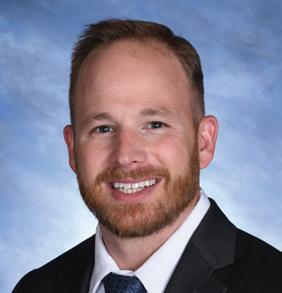


Spotlight your organization in


The intersection of business and nonprofits in North Texas
Brought to you by the editors of D CEO, D Magazine Partners’ award-winning business title, and leaders who support them. Highlight your organization among Dallas' influential nonprofit and business leaders.


Reach out to Rachel Gill, Sales Manager, at rachel@dmagazine.com to find out more.





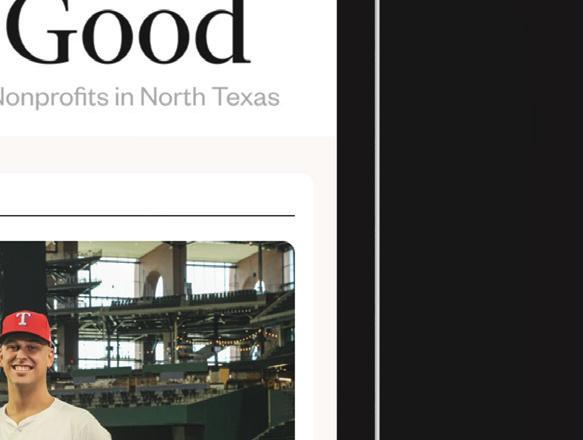






































































































































D CUSTOM is the award-winning custom publishing agency of D Magazine Partners, which has a 50-year history of editorial excellence. We know how to break through, hold attention, and make an impression that moves people to action.










































D Custom creates editorial-quality magazines and other publications for clients across the country who know the value of a well-reported, well-written, and well-designed respite from our always-on lives.
















As Dallas-Fort Worth continues to attract more businesses and people, surrounding cities are also benefitting from the growth. CEOs and their employees who crave a sense of community, as well as businesses looking for tax advantages and other perks, are quickly claiming space in Dallas-Fort Worth and the surrounding suburbs. Here, local economic development experts reveal why their cities are in demand for corporate and residential development.
Town of Addison addisoned.com
EDC Contact: Wayne Emerson wemerson@addisontx.gov
Population: 17,026 County: Dallas
Major Businesses: Mary Kay Google Hilton Bank of America Concentra
How has Addison sustained interest as an attractive option for companies seeking new alternatives and locations, given the challenges of the past few years on the economy and daily work life?
Location, location, location. Texas continues to be the premier destination for companies seeking to relocate, and Addison benefits from being right in the heart of Dallas-Fort Worth. A central location makes it an ideal hub for companies needing to access markets across the country, and Addison’s positioning within Dallas-Fort Worth amplifies that advantage with access to every major submarket in the region.
Within that same 30-minute drive, businesses can tap into



a workforce of more than three million people. This extensive labor pool, combined with the ease of commuting from any direction, makes Addison a highly attractive option for companies looking for access to talent, even in today’s challenging economic and work environment.
How does Addison di erentiate itself from others in the region?
Addison brings the best of both worlds—urban convenience with a small-town feel. Nestled in a suburban setting, Addison offers big-city amenities that set it apart. With more than 200 restaurants, Addison has more dining options per capita than anywhere else in the region, making it a true culinary destination.
Addison also offers excellent public transit options, including the upcoming DART Silver Line, which will connect us even more efficiently to the
broader region. Additionally, Addison Airport, one of the busiest general aviation hubs in Texas, provides exceptional mobility for corporate travel and private aviation.
What are businesses looking for in a site location today that they weren’t looking for a few years ago?
Today, businesses are more focused than ever on their most important asset: their people. They’re looking for locations that not only offer short commute times but also provide amenities that can compete with—and even exceed—the comforts of working from home. Addison delivers on both fronts. With its central location, employees benefit from reduced drive times, and the town’s vast array of dining, entertainment, and lifestyle options create an environment that enhances both work-life balance and employee satisfaction.

Celina Economic Development Corporation CelinaEDC.com
EDC Contact: Anthony Satarino, Executive Director Celina EDC 940.232.0958
Population: 43,717
County:
Major Businesses:
Celina Independent School District, City of Celina, Methodist Celina Medical Center, Collin College Celina Campus
How does Celina di erentiate itself from others in the region?
With its most exciting and robust days ahead, Celina’s leaders remain committed to preserving the community’s treasured heritage and deeply esteemed values. Developers and investors will appreciate the intentionality of maintaining a financial, redevelopment, and placemaking emphasis on Celina’s historic downtown district, a critical differentiator among communities in the region. This strategy is imperative, as the United States Census Bureau named Celina the fastest-growing city in the nation in 2023, with a population growth of 26.6% from the previous year to 43,717 residents. During this
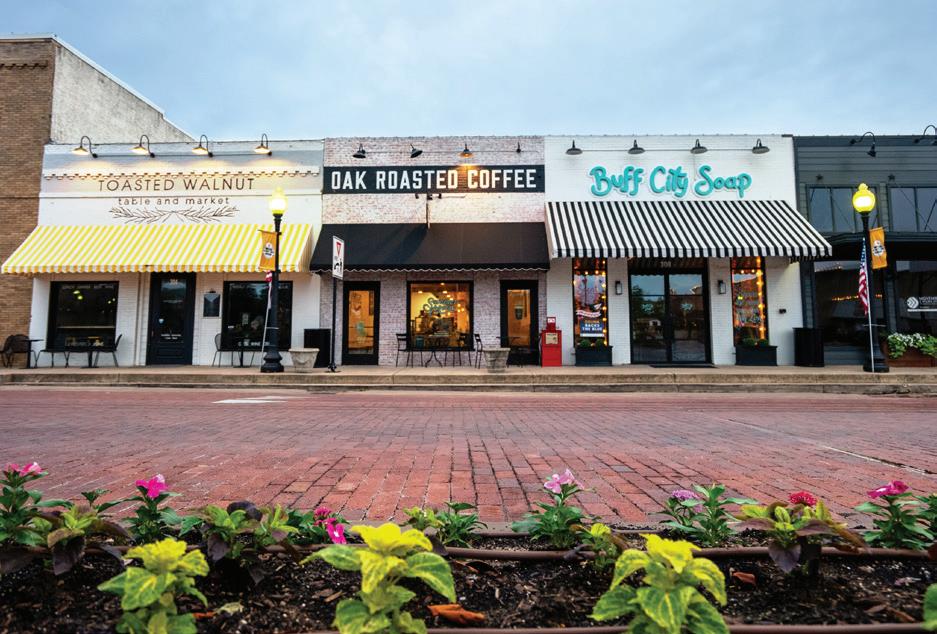


season of unprecedented growth, the community’s highest priority is to honor the past and to maintain Celina’s historic downtown area as its central gathering destination and the hub for restaurant, retail, and small businesses in the community.
What type of opportunities exist for businesses looking to relocate or expand into Celina?
Located just 40 minutes north of downtown Dallas, Celina boasts a prime North Texas location. Businesses will thrive from 10 miles of real estate that sits along two of the region’s most prized roadways, Preston Road and the Dallas North Tollway. Companies and their employees settling in Celina have easy access to diverse amenities, job markets, and other attractions and neighboring cities in North Texas.
Celina’s massive footprint sits within the area’s robust and diverse economic hub, allowing businesses the opportunities to grow and expand in one of the hottest markets in the
United States. Developers and investors can tap into the vast economic toolkit of Dallas-Fort Worth, including its strong job market, retail centers, and business development areas.
What steps is Celina taking to prepare for becoming the next north Texas boom town?
With the Tollway set to open as a freeway through Celina in 2026, opportunities exist for corporate relocations and developments to stake their place as the transportation corridors continue to move north. As a city with more than 78 square miles, Celina still has ample room to grow and opportunities to connect investors and the development community with property owners throughout the footprint.
With the population surge in Celina, city infrastructure must also adapt. The new 100,000-square-foot government center scheduled to open in 2026 will help the city manage rapid expansion and the increasing demand for municipal infrastructure.


























Located 40 miles north of Dallas, Celina provides a hub of opportunity for entrepreneurs, corporate expansions and relocations in search of the perfect mix of strategic location, economic vibrancy and a supportive business environment. With a community that supports innovation and growth, Celina represents a thriving business landscape rich with opportunities to live, work and play.







The Colony Economic Development Corporation thecolonyedc.org
EDC Contact: Keri Samford 972.624.3127 info@thecolonyedc.org
Population:
45,000
County:
Major Businesses: Nebraska Furniture Mart, Scheels
How does The Colony di erentiate itself from others in the region? We have unique businesses in The Colony, some of which are the only ones in the state of Texas. We are the home of Grandscape, a true Texas destination, and home to Nebraska Furniture Mart, Scheels, Windmills, and World Springs along with more than 50 other entertainment, restaurants, and retailers.
Which industries are demonstrating the most interest in The Colony today? Entertainment venues and restaurants, such as Fritz’s Adventure and Mavericks


Dance Hall, are currently under construction in The Colony. In addition, we have one-andonly or first-to-market venues, such as Pop Stroke, Cosm, Fire Side Surf, World Springs, Lava Cantina, Andretti Indoor Karting, Davio’s Northern Italian Steakhouse, and Cigars International—to name a few.
What financial, tax incentives, or other programs have been created to help The Colony attract businesses? We can be very competitive
in the market with our partnerships for the right businesses. We structure any deal with a win-win attitude and strive to ensure our partners have the tools they need to succeed. Depending on the project, the needs to bridge the gap will differ. We evaluate each project independently and structure our deals accordingly.




City of Dallas Office of Economic Development dallasecodev.org
EDC Contact: Kevin Spath 214.670.1685 kevin.spath@dallas.gov
Population: 1.3 million County: Dallas
Major Businesses: AT&T, Energy Transfer, HF Sinclair, CBRE Group, Southwest Airlines, Builders FirstSource, Texas Instruments, Tenet Healthcare, Jacobs Solutions, AECOM, EnLink Midstream, AMN Healthcare Services, Primoris Services, Atmos Energy, ATI, Brinker International, Comerica, Copart, Match Group, Matador Resources, Frontier Communications

How has Dallas sustained interest as an attractive option for companies seeking new alternatives and locations, given the challenges of the past few years on the economy and daily work life?
Dallas remains an attractive option for companies looking for new or expanded locations due to its urban core and dynamic business environment. Dallas has long been focused on sustainability and livability through smart city innovation, public transportation, mixed-use development to create walkable neighborhoods, and cultural and recreational opportunities, including our great parks system and the Dallas Arts District. As businesses have adjusted their work models, maintaining Dallas as a great place to live and work ensures we have the talent for existing and future



companies. We continue to be a hub for corporate headquarters and expansions, and are excited by the growth in biotech and life sciences, anchored by the Medical District and Pegasus Park.
How does Dallas di erentiate itself from others in the region?
With a population of more than 1.3 million, a residential labor force of almost threequarters of a million, and over a million jobs within the Dallas city limits, we are the anchor of the DFW region. Dallas is the leading urban choice in North Texas—a welcoming community where density, diversity, and innovation intersect. Dallas has 340 square miles of new and historic neighborhoods; 150 million square feet of office space; a comprehensive transportation network, including five interstates, three airports and DART; world class arts, museums and parks, and a diverse economy. Regardless of what you are looking for, you can find it in Dallas.
What financial, tax incentives,
or other programs have been created to help Dallas attract businesses?
Dallas has long had a variety of tools and incentive programs, including tax increment financing districts, Property Assessment Clean Energy financing, New Markets Tax Credits, tax abatements, grants and loans, a general obligation bond program, and freeport tax exemptions.
In January 2023, a revised Economic Development Incentive Policy was approved to encourage development in Southern Dallas and other areas that historically have experienced under investment. It establishes additional tools to spur additional investment in Target Areas (Census block groups with a poverty rate of 20% or greater) including an as-of-right tax abatement program, a community development program, an Infrastructure Investment Fund, and a predevelopment loan fund. We also are working closely with the recently established Dallas Economic Development Corporation to help us market and attract businesses to Dallas.






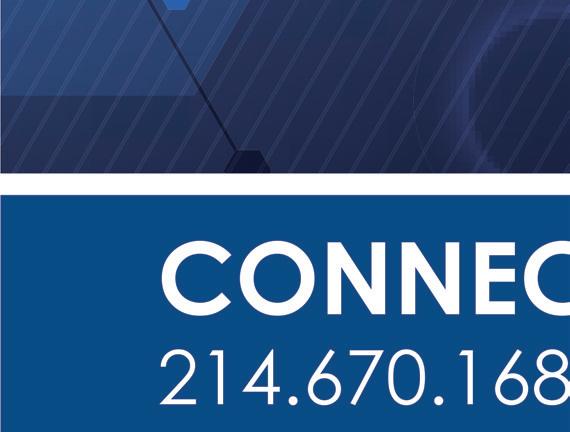













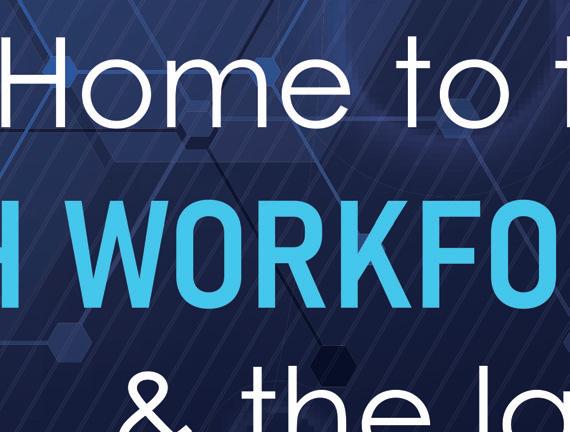
















City of Farmers Branch Economic Development farmersbranchtx.gov
EDC Contact: Perla Tavera perla.tavera@farmersbranchtx.gov
Population: 40,000
County: Dallas
Major Businesses: Essilor, BSN, Centurion American Development, Brinks Home, TD Industries, Softlayer Technologies, Boxer Property, Copart, Lidon Security Associates
How does Farmers Branch di erentiate itself from others in the region?
We are a hidden gem, conveniently located close to DFW Airport, Love Field, and the Dallas Cowboys Stadium, yet still offering the charm of a small suburban city. Farmers Branch features incredible amenities and exceptional public safety. Whether you're in the mood for fine Italian cuisine or award-winning BBQ, our city has it all. Farmers Branch boasts the headquarters for top companies, such as BSN Sports LLC, TD Industries Inc, and Brinks.
What are the five most important needs of businesses when choosing a site location, especially now? When businesses are choosing a site location, factors such as space availability and ease of collaboration with the city



play a significant role. Open communication with the city in areas like planning, permits, and public safety allows for more transparent and seamless decisions. Additionally, businesses are looking to be in close proximity to airports, target markets, and housing.
What type of opportunities exist for businesses looking to relocate or expand into Farmers Branch?
Farmers Branch is home to an array of diverse businesses, and our goal is to keep the momentum going. From warehouses and distribution centers to retail and corporate headquarters, our location near major interstates is essential to our ongoing growth and future development. We not only
welcome new business but deeply appreciate our existing businesses and the value they bring to Farmers Branch.
What financial, tax incentives, or other programs have been created to help Farmers Branch attract businesses?
The City of Farmers Branch offers a variety of incentive programs, including the Residential Demo/ Rebuild Program and the Commercial Façade Revitalization Program. Additionally, the city offers property tax rebates and sales tax incentives. These programs are specifically designed to enhance the evolving appearance of our buildings, modernize its landscape, and ensure that Farmers Branch remains a vibrant and attractive place to live and do business.






City of Fort Worth Economic Development Department itbeginsinfortworth.com
Department Contact: Robert Sturns
Population:
978,468
County:
Major Businesses:
Alcon, American Airlines, Bell, BNSF, Eosera, Higgenbotham, Lockheed Martin, Sinclair Digital
How does Fort Worth di erentiate itself from others in the region?
While it may be the 12thlargest city in the U.S. and the fastest-growing large city in the nation, Fort Worth is still being built-out–and there’s plenty of room for companies to get in on the ground floor. New projects in 2023 alone represented more than $2 billion in private investment and created more than 4,000 new full-time jobs. In addition to our thriving Cultural District and the $630 million expansion of the Historic Stockyards entertainment district, there’s also incredible potential in Fort Worth’s urban core. More than $2.5 billion in planned development is slated for downtown in the near future, including the Texas A&M-Fort Worth campus



and the expansion of the convention center.
What financial, tax incentives, or other programs have been created to help Fort Worth attract businesses?
Fort Worth has several tools to attract businesses, including Chapter 380 grants, tax abatements, opportunity zones, foreign trade zones, neighborhood empowerment zones, and more. Fort Worth also utilizes tax increment finance districts and public improvement districts and offers local tax credits for ongoing research and development projects that take place within the city.
What does Fort Worth evaluate when looking to attract a new business? We want to ensure businesses are a good cultural fit with the collaborative nature of Fort Worth, building upon the strengths of the city’s business environment while
also embracing their role as local partners and community stakeholders.
Which industries are demonstrating the most interest in Fort Worth today? Fort Worth continues to see strong interest from aerospace, manufacturing, logistics, and R&D companies. But this year, our biggest story is the expansion of multiple higher education organizations within the city. Texas A&M’s urban campus will combine the university’s Tier 1 research expertise with private-sector collaboration; UTA West will take shape in the still-developing western side of the city, becoming UTA’s third campus in Fort Worth; TCU, Tarleton, and Texas Wesleyan are all expanding. These new programs will have a significant impact on Fort Worth’s workforce and talent pipelines for generations to come.












City of Garland, Economic Development Department GarlandEDP.com
EDC Contact: Ayako Schuster 972.205.3818 ASchuster@GarlandTX.gov
Population:
250,701
County: Dallas
Major Businesses: Micropac Industries, Epiroc Drilling Solutions, Massimo Motor Sports, Quest USA
How does Garland di erentiate itself from others in the region? Garland has the unique advantage of being a big city with small town values. Businesses here are welcomed into the community and met with a can-do spirit. The city is also one of the most diverse in Dallas-Fort Worth, offering a variety of cultural experiences. Numerous internationally based businesses choose Garland for their strategic locations.
Which industries are demonstrating the most interest in Garland today? The revitalization of the Downtown Square was a great start in attracting projects ranging from destination retail to unique dining concepts


and high-density multifamily. Garland is focused on collaborating with real estate developers on adaptive reuse, mixed-used development, and building infrastructure to support urban infill and retail revitalization. Garland Power & Light, a locally owned not-for-profit municipal electric utility company, provides safe and reliable service at competitive, stable rates. The ability to offer businesses high-quality power in strategic areas is a primary reason for the growth of data centers along President George Bush Turnpike and the continual expansion of major manufacturing companies in Garland.
What type of opportunities exist for businesses looking to relocate or expand Into Garland?
The City of Garland strives to offer a full array of services, with an enhanced permitting process designed
to ensure developers meet targeted schedules. In today's economic climate, we understand each project is singular and presents unique challenges. Our team strives to get creative with incentive options to fill specific gaps and work collaboratively to meet development goals. Even after the deal is made, we continue our support as a sounding board and a resource.
What does Garland EDP evaluate when looking to attract a new business?
We believe in taking a holistic approach in business attraction. It's important to look at how the city fits into the business' vision, along with how the business fits into the city's vision. One quality we love to see is a unique and creative business plan, whether it be a corporation or an entrepreneur. We also seek to build relationships and work with those who plan to be in the community long-term.





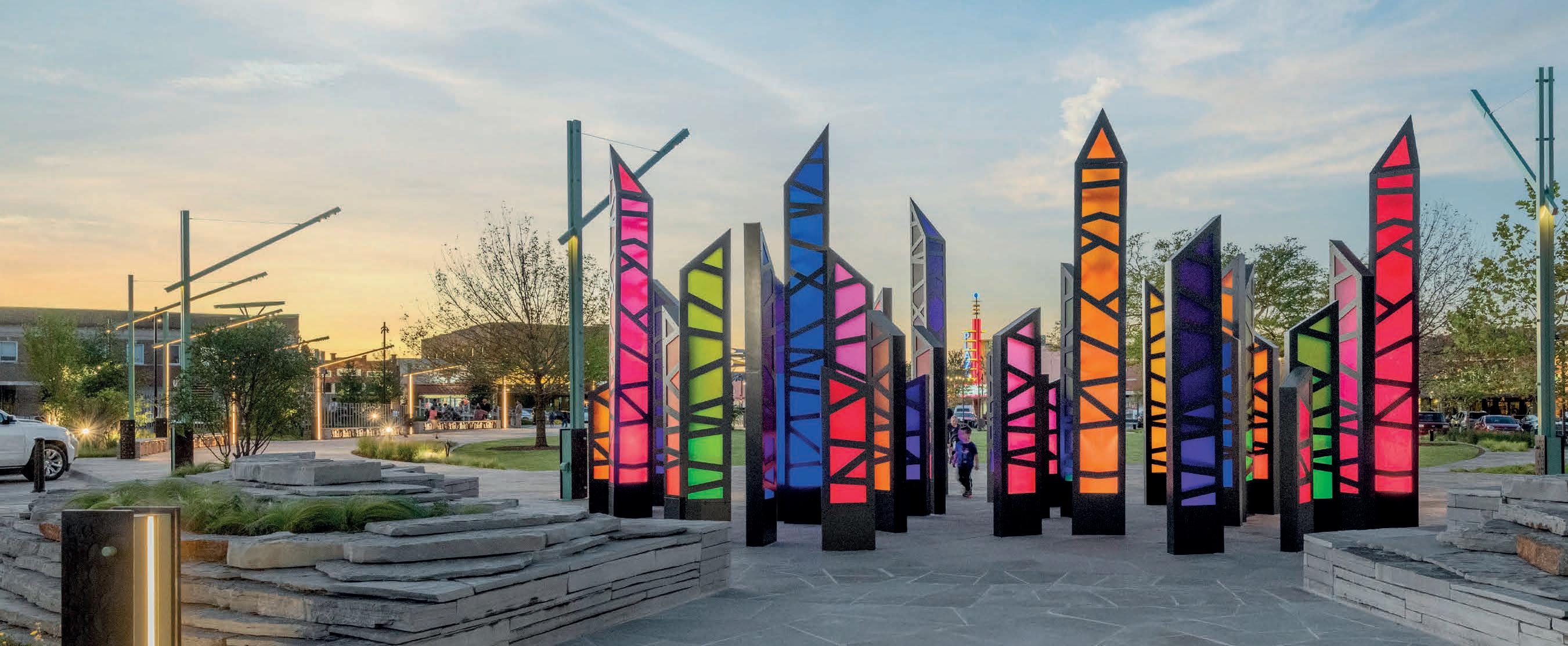









McKinney, Texas
UniqueMcKinney.com
ECD Contact: Michael Kowski mkowski@mckinneyedc.com
Population:
220,704
County: Collin
Major Businesses:
Raytheon Intelligence & Space Globe Life Independent Financial Encore Wire
Dynacraft, a PACCAR Company Amazon LifePath Systems Simpson StrongTie Blount Fine Foods
SRS Distribution, Inc.
How has McKinney sustained interest as an attractive option for companies seeking new alternatives and locations, given the challenges of the past few years on the economy and daily work life?
In the economic landscape of the past few years, McKinney has emerged as a beacon for companies seeking stability, growth, and innovation. Flexible Incentive Programs— recognizing the financial challenges many business have faced, the EDC revamped its incentive programs. Tax breaks, streamlined permit processes, and subsidies have been tailored to attract businesses of all sizes, from startups to established enterprises. The City has fostered partnerships between local universities, vocational training centers, and businesses to ensure a steady flow of skilled workers tailored to industries’ evolving needs and create a diverse talent pool.


How does McKinney differentiate itself from others in the region?
McKinney uniquely blends historical charm with contemporary conveniences, prioritizing green initiatives and sustainability. McKinney’s community-centric ethos, underscored by regular events and a tight-knit vibe, complements its dedication to educational excellence. Our proactive EDC tailors strategies to current industry trends and remains committed to inclusive growth, promoting diversity of companies and workforce.
Which industries are demonstrating the most interest in McKinney today?
Technology and Innovation. McKinney’s proximity to Dallas-Fort Worth has made it an attractive hub for tech startups and established IT enterprises alike. The McKinney National Business Park and several co-working spaces across the city area testament to the area’s commitment to fostering the tech ecosystem.
What type of opportunities exist for businesses looking to relocate or expand to McKinney?
McKinney is the largest land mass city in Collin County, and we are only one-third developed. There will be new pockets of development opportunity popping up all over McKinney as the 380 Bypass gets built, and further as the Collin County outer loop is expanded. Twenty to 30 years from now, we believe that McKinney will just be hitting the stride of its full development potential.
How has the region’s market growth impacted development and offerings in McKinney during the past three years?
During the past three years, the rapid market growth in Dallas-Fort Worth has significantly influenced McKinney’s landscape. The city has witnessed a surge in both residential and commercial real estate developments to accommodate the expanding population and businesses. Additionally, McKinney has seen an enrichment in its cultural and recreational amenities, an expansion in educational institutions, and a growth in the retail and hospitality sectors.




City of Wilmer/ Dallas County Inland Port
EDC Contact: Rona Stringfellow 972.441.6373
rstringfellow@cityofwilmer.net
Population: 7,180 County: Dallas
Major Businesses: Ace, Proctor and Gamble, Whirlpool, Unilever, Yokohama, Smuckers, Amazon, Sprouts, CarMaxx, TriColor, Stream Data Center, Nike, Ryder, Crate & Barrel, Trina Solar
How has Wilmer sustained interest as an attractive option for companies seeking new alternatives and locations, given the challenges of the past few years on the economy and daily work life?
The City of Wilmer is one of the last cities in southern Dallas County with available land area. Wilmer is currently 12.5 square miles with the ability to grow up to 22 square miles. Wilmer is affordable, with a staff that understands the speed of business. Although there is a large amount of development, the staff is still able to get reviews done in a timely fashion.
How does Wilmer di erentiate itself from others in the region?
Location to the major interstates with proximity to an Intermodal facility. Available talent and labor with multiple transportation networks. It is


still relatively rural but within 15 minutes of downtown Dallas. Wilmer’s abundant, affordable acreage in five industrial parks along with a workforce of two million, make Wilmer even more attractive. And, as Wilmer grows, so does the need for more retail, restaurants, hotels, and a grocery store.
What are businesses looking for in a site location today that they weren’t looking for a few years ago?
Connectivity of fiber as well as redundancy; ability to work with a knowledgeable staff; electric reliability; water and sewer availability; rural proximity as well as proximity to the arts and culture of Dallas, Fort Worth, and Arlington; a willingness to explore creative financing opportunities, and the ability to adjust to changes in the development climate. After Union Pacific (UP) chose Wilmer for its global intermodal facility, the City attracted Fortune 500 companies like Unilever, Proc-
tor & Gamble, Whirlpool, Ace Hardware, and Medline. It was recently announced that Trina Solar plans to build a more than one-million-square-foot facility to manufacture photovoltaic modules, specifically large power output Vertex modules, in Wilmer. This will be the first of its kind in the western hemisphere.
What financial, tax incentives, or other programs have been created to help your city attract businesses?
Wilmer’s low tax rates, along with generous incentives, are moving opportunity forward! For qualifying companies, the City of Wilmer offers tax abatements for real and business personal property, including abatements on qualified leasing arrangements. And, as Wilmer continues to grow, so does the need for more retail, restaurants, hotels, and a grocery store. The infrastructure plan for southern Dallas County is equally important to support continued growth.


Nestled within four major highways, the City of Wilmer is an ideal location for transportation related industries. The City envisions attracting advanced manufacturing and health technology to compliment current health sector companies. Our doors are open for business! Recent deals include Crate and Barrel, Nike, & Trina Solar. Come grow with us!
Nestled within four major highways, the City of Wilmer is an ideal location for related industries. The City envisions attracting advanced manufacturing health technology to compliment current health sector companies. open for business! Come grow with us! www.wilmeredc.net







City of Anna Economic Development Corporation OpportunityAnnaTX.com
EDC Contact: Bernie Parker 214.831.5394 bparker@annatexas.gov
Major Businesses: Branco Manufacturing, Omnimax USA
Which industries are demonstrating the most interest in Anna today?
Medical, retail, dining, and professional services. Since 2019, Anna has added more than 100 new businesses, created more than 500 jobs, and finalized commercial and residential projects representing investments of over $3 billion.
What does Anna’s EDC evaluate when looking to attract a new business?
Anna is open to all highquality business propositions

that diversify its offerings for neighbors and visitors and also support our vision as one of the top five fastest-growing cities in North Texas.
How does Anna di erentiate itself from others in the region?
With its business-friendly leadership, 61 square miles of planning area, and ideal location on the U.S. 75 corridor between Dallas and
Grayson County’s rising tech hub, Anna is built for opportunity. Diverse housing, growing retail and service offerings, and numerous outdoor recreation options provide neighbors in Anna and the workforce from surrounding communities with an excellent quality of life.
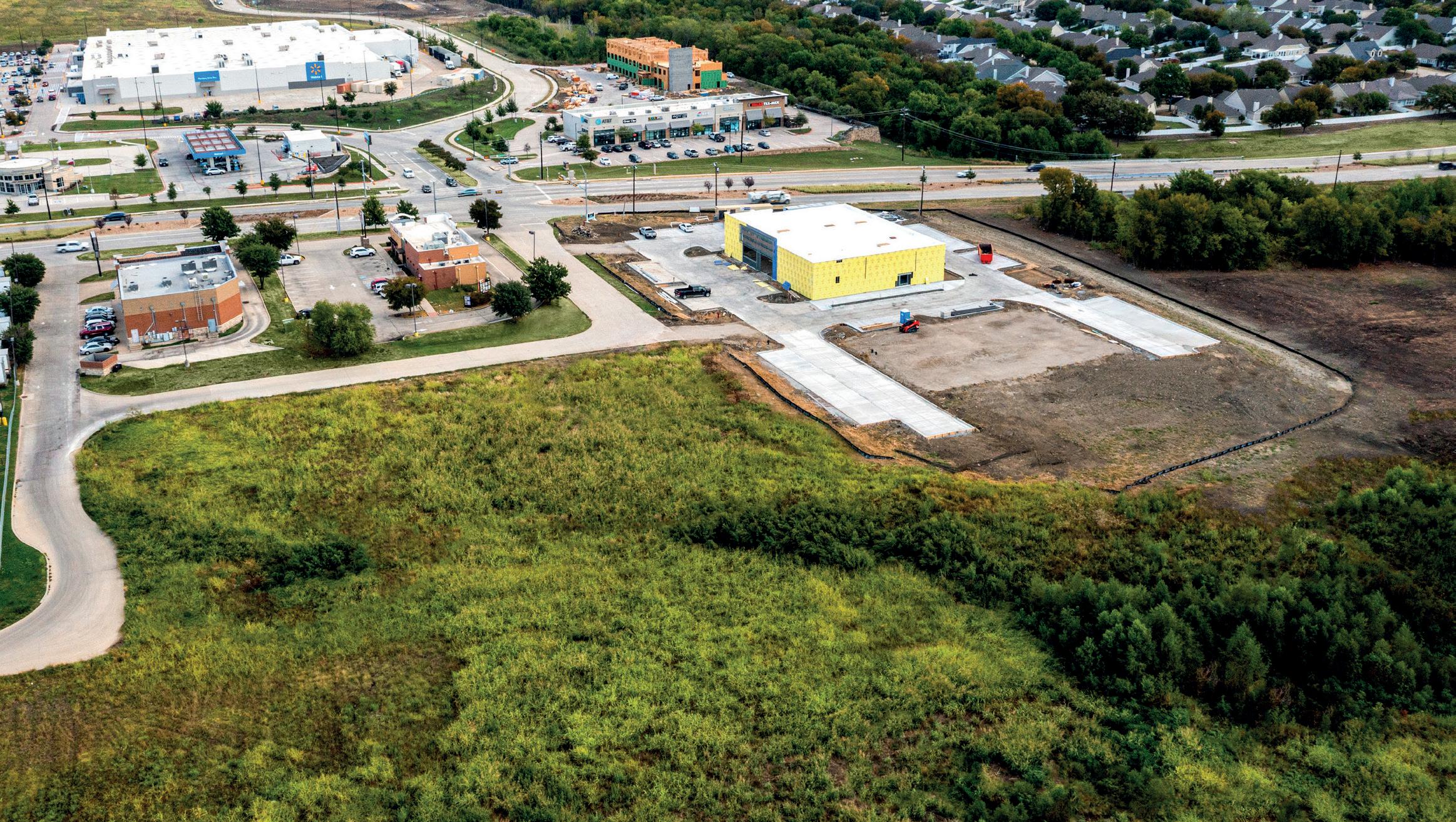

Sachse Economic Development SachseEconomicDevelopment.com
EDC Contact: Jerod Potts
469.429.4764
EconomicDevelopment@CityofSachse.com
Population: 31,778
Counties:
Collin and Dallas
Major Businesses:
Evolve Biologics, Applied Energy Company
What financial, tax incentives, or other programs have been created to help Sachse attract businesses?
Sachse supports businesses through various programs and incentives, including tax abatements, grants, fee waivers, and more. We evaluate each opportunity individually and get creative with how we can assist so that businesses flourish.
What does Sachse evaluate when looking to attract a new business?
Sachse focuses on attracting new businesses that fall within


identified target industries and contribute to the city’s vision. We prioritize opportunities that create unique destinations, enhance our community, and diversify the tax base. Target industries in Sachse are medical, health and wellness, life sciences, technology, and niche/specialty retail.
What kind of new developments are in the pipeline?
The City of Sachse and the Sachse Economic Development Corporation are actively developing a walkable, from-scratch downtown. This area will feature curated niche restaurants, urban living, and other lifestyle uses. Downtown Sachse will serve as a hub for community activities, attracting new businesses, and fostering a sense of place that enhances the quality of life in the community.

























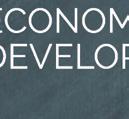


Story by WILL MADDOX
he red pegasus symbol that has become ubiquitous throughout Dallas first sat atop what was the tallest building in Texas—the Magnolia Petroleum Building. The Sealy family of Galveston developed the 29-story tower in 1922 for $4 million. The Beaux-Arts style structure was situated next to what had been the state’s tallest building, the Adolphus Hotel on Commerce Street. Socony-Vacuum Oil Co. purchased Magnolia Petroleum in 1931. Three years later, in 1934, it erect-
ed a rotating red neon pegasus on top of the tower. It was visible for miles into the surrounding prairie and helped define Dallas as a place of strength and possibility. In 1959, Mobil Oil acquired the business and adopted the Pegasus as its symbol for almost four decades until it merged with Exxon in 1998. The original winged horse remained atop the Magnolia Building until 1999, two years after the tower was converted into the 330room Magnolia Hotel. A new Pegasus replaced the old one in 2000, and the original sign was later discovered in a city storage facility and restored. In 2015, it found a new home in front of the Omni Hotel in downtown Dallas. The city has an agreement with ExxonMobil to continue to use the Pegasus as a symbol for Dallas, and its legacy lives on through things like the biotech and nonprofit development Pegasus Park, Pegasus Plaza downtown, the Pegasus mascot for Booker T. Washington High School, and the Pegasus logo for Dallas’ WNBA team, the Wings. The Magnolia Building is now a Dallas landmark and is listed on the National Register of Historic Places.
POSTMASTER SEND ADDRESS CHANGES TO D, 750 NORTH ST. PAUL STREET, SUITE 2100, DALLAS, TX 75201. D CEO (ISSN2688-4852), IS PUBLISHED MONTHLY WITH THE EXCEPTION OF COMBINED ISSUES IN JANUARY/ FEBRUARY AND JUNE/JULY BY D MAGAZINE PARTNERS, 750 NORTH ST. PAUL STREET, SUITE 2100, DALLAS, TX 75201. APPLICATION TO MAIL AT PERIODICALS POSTAGE IS PENDING AT DALLAS, TX.









